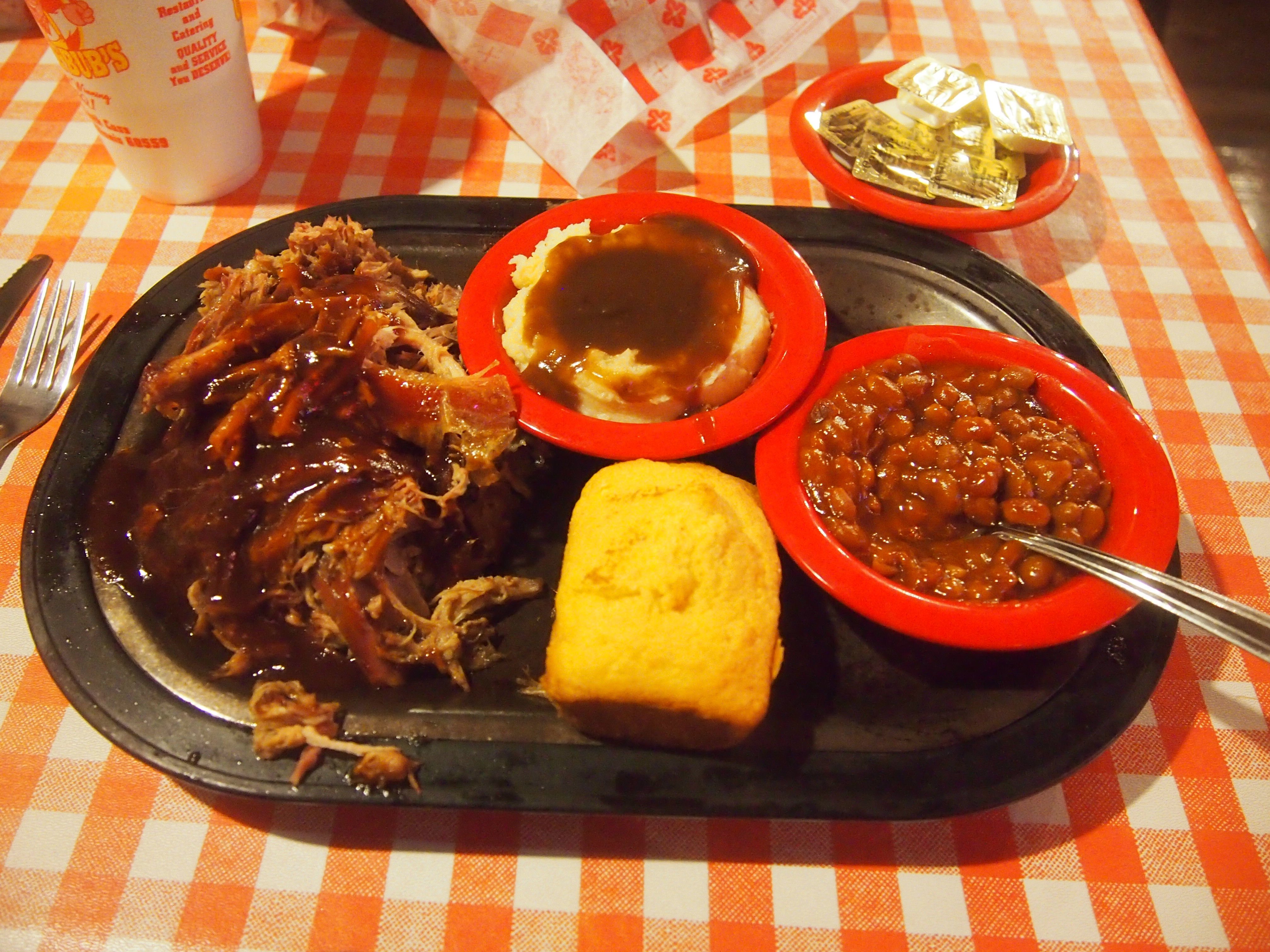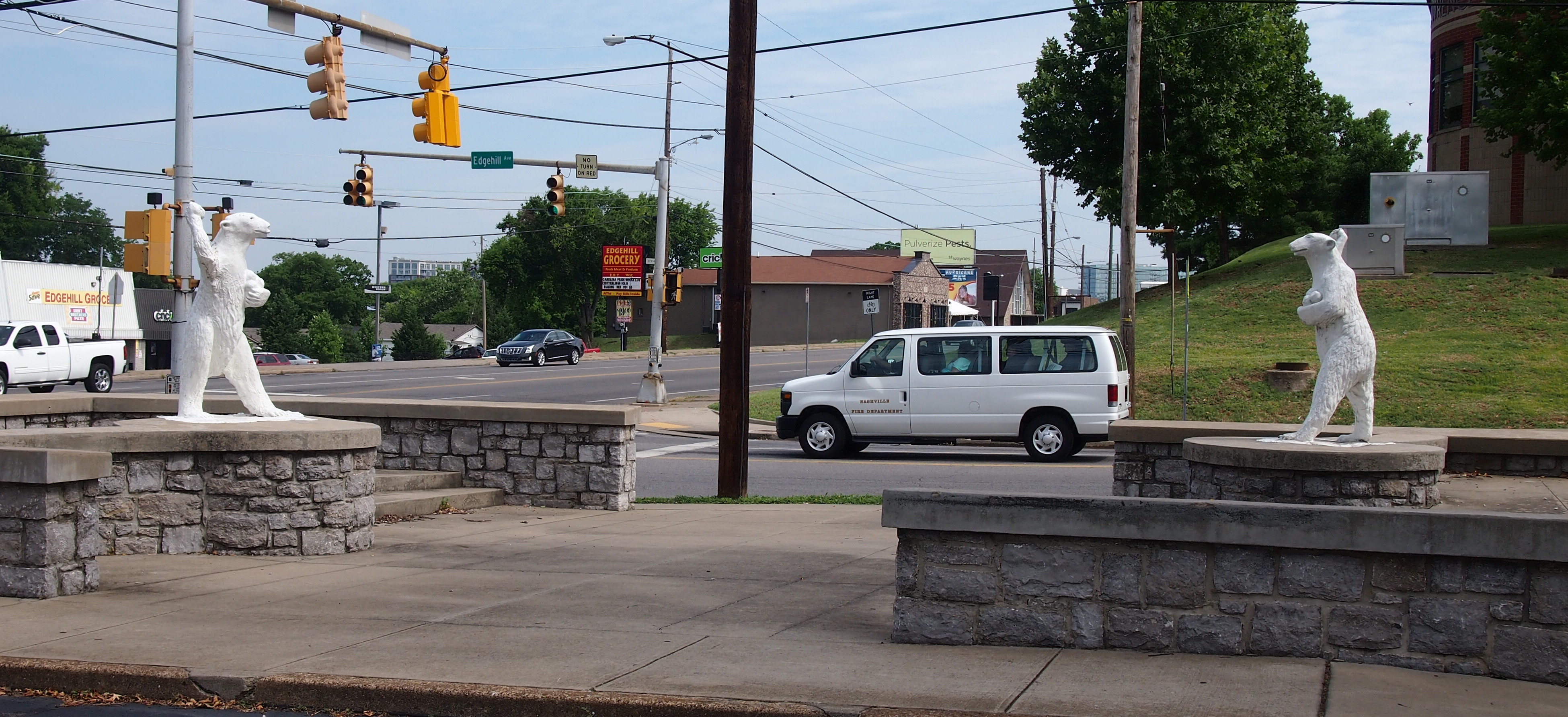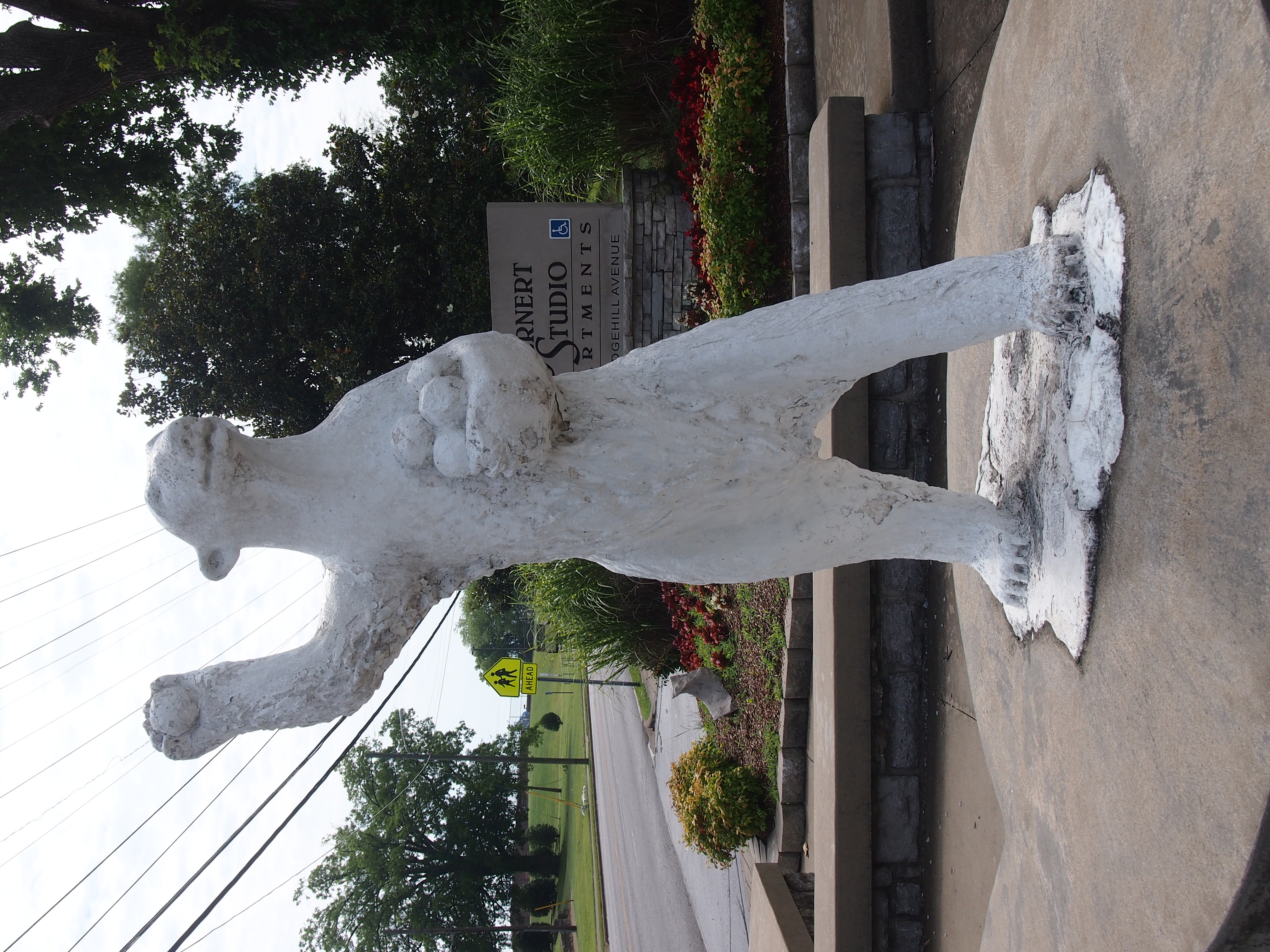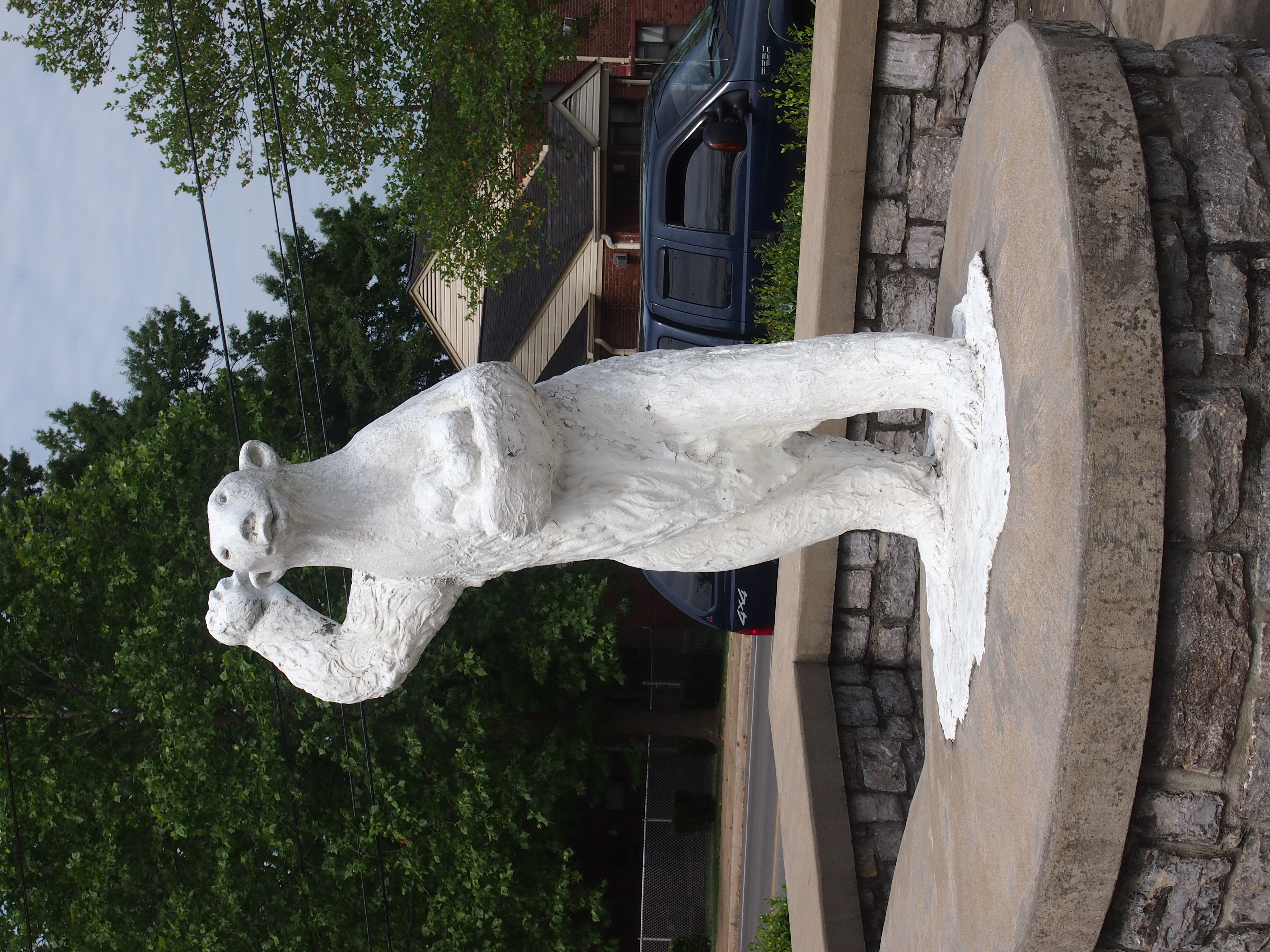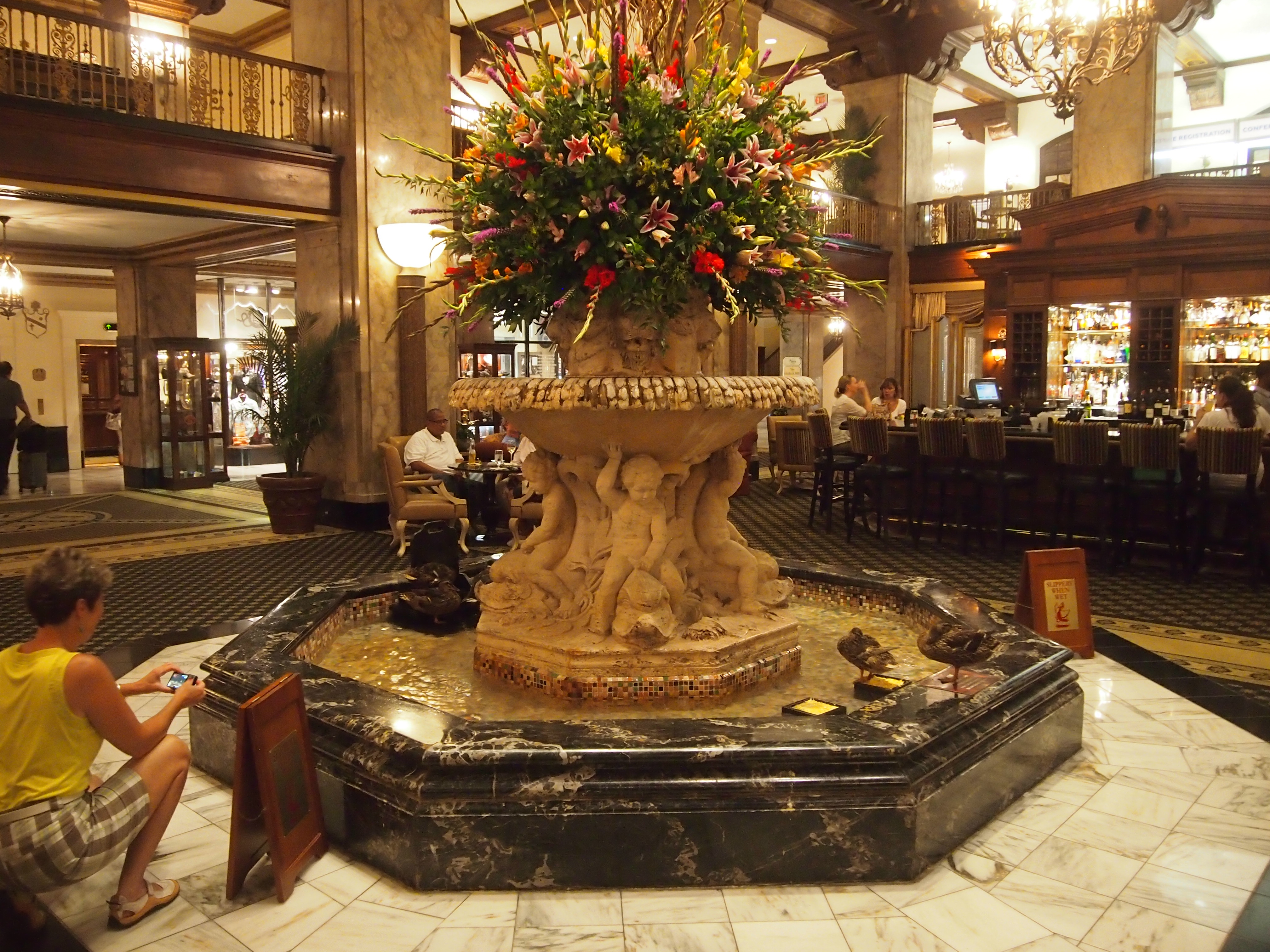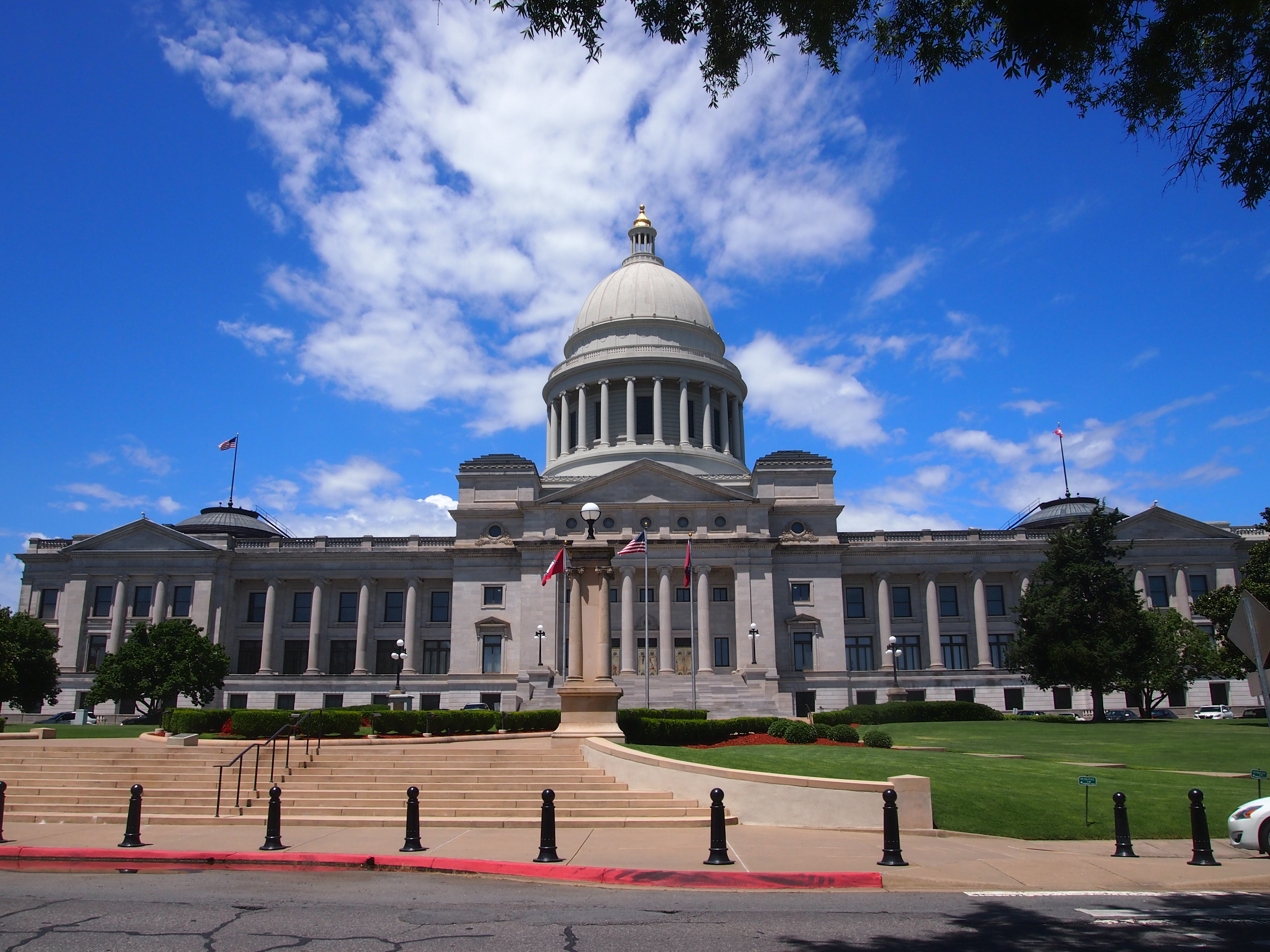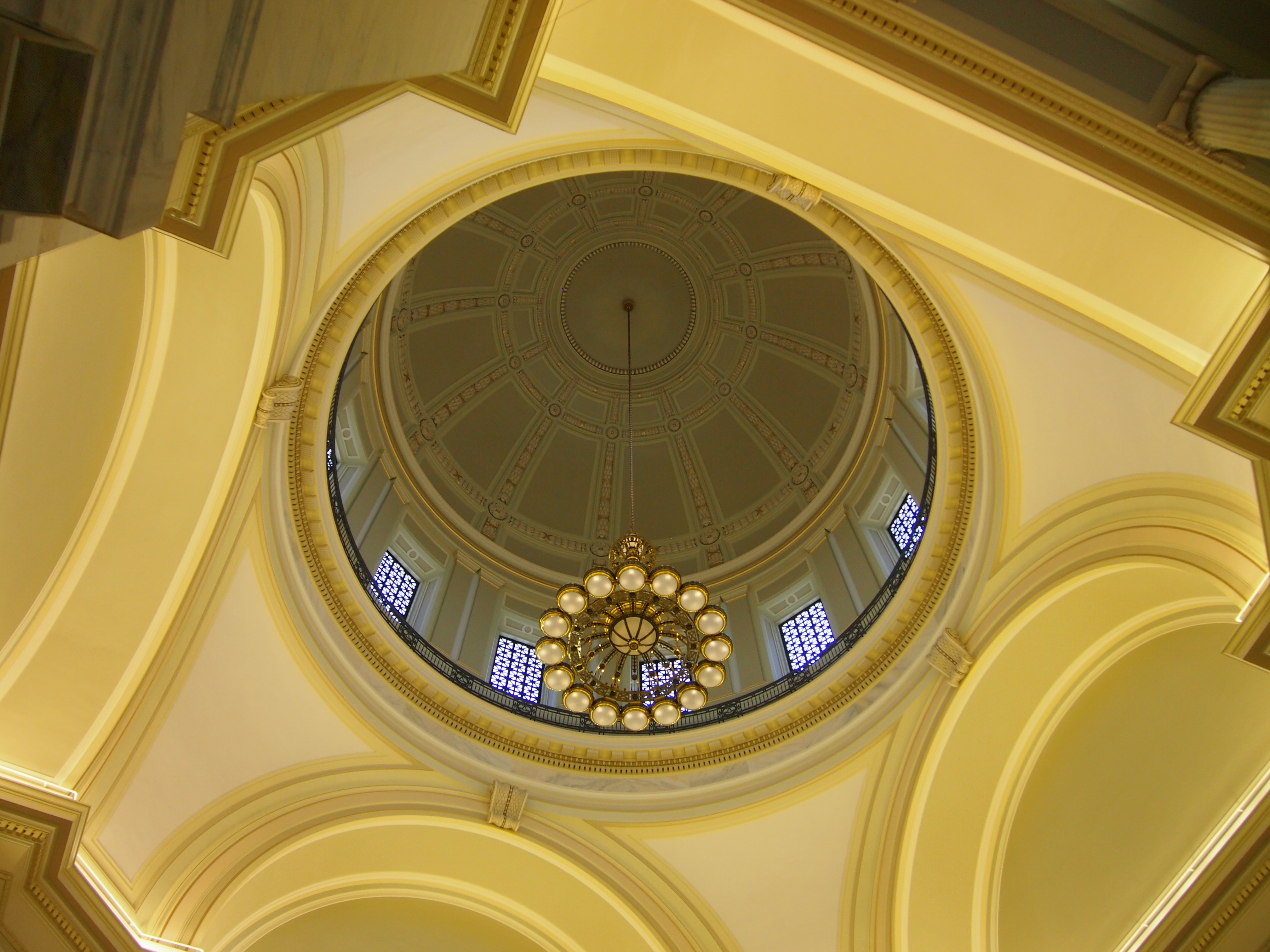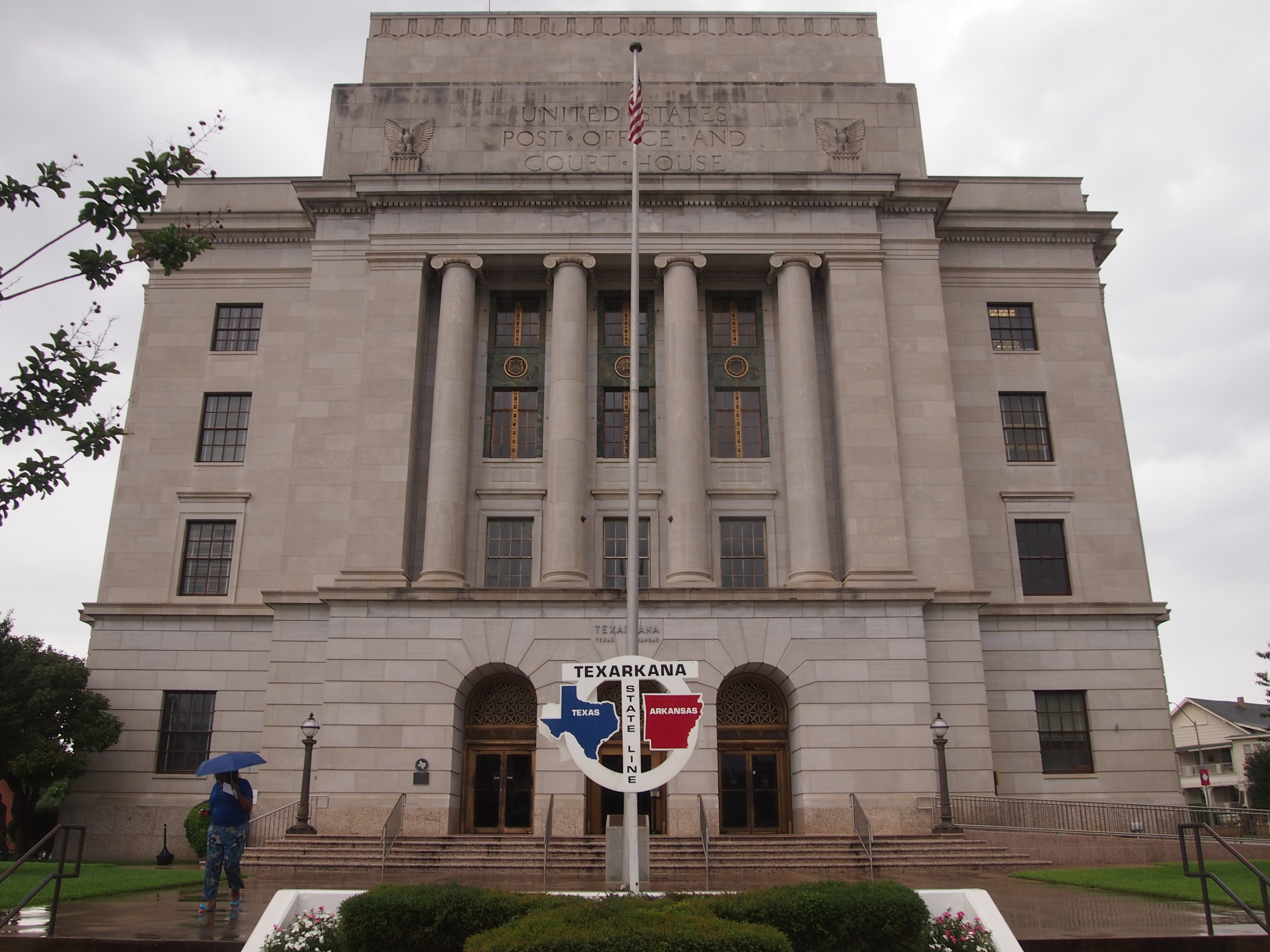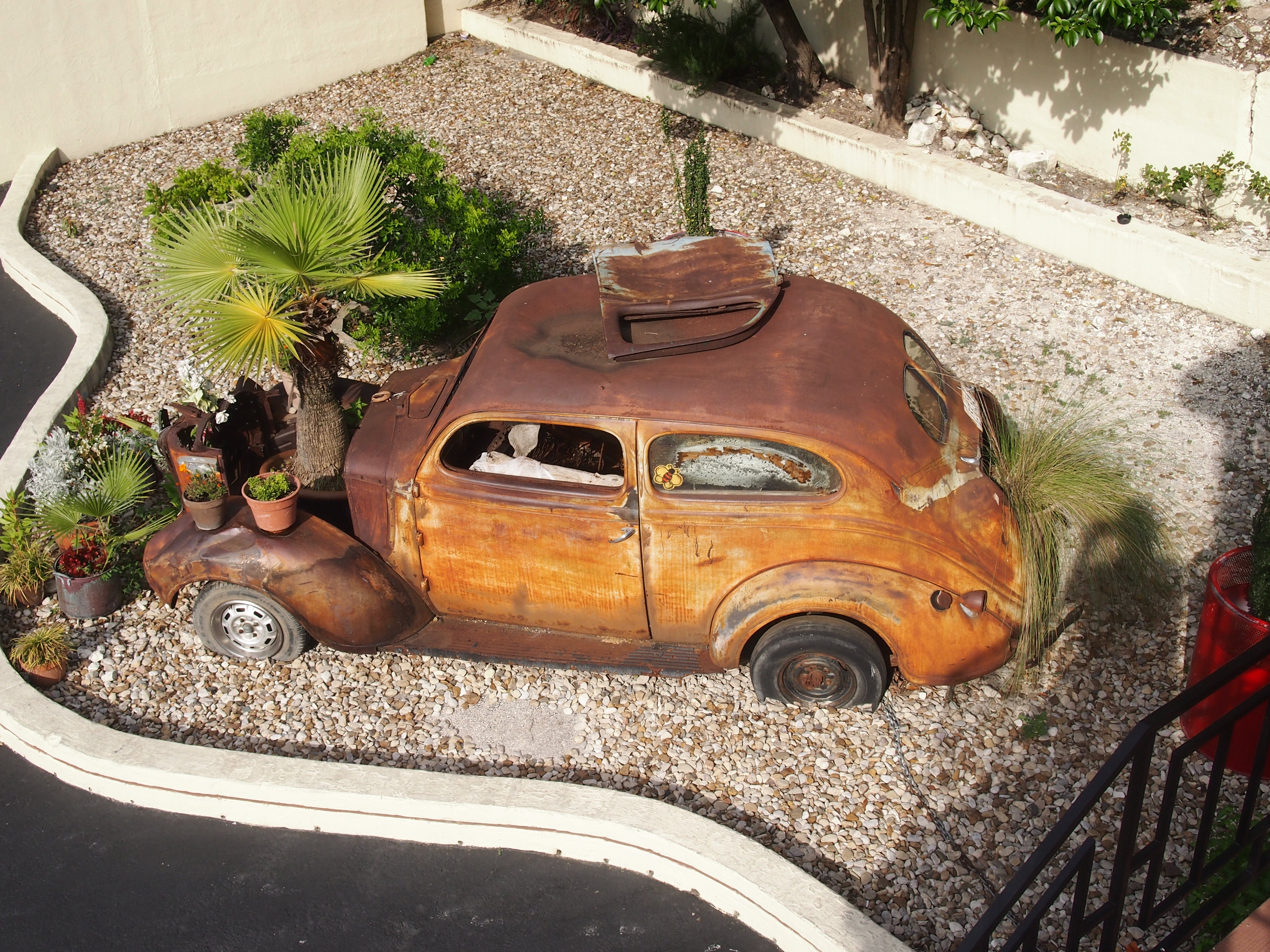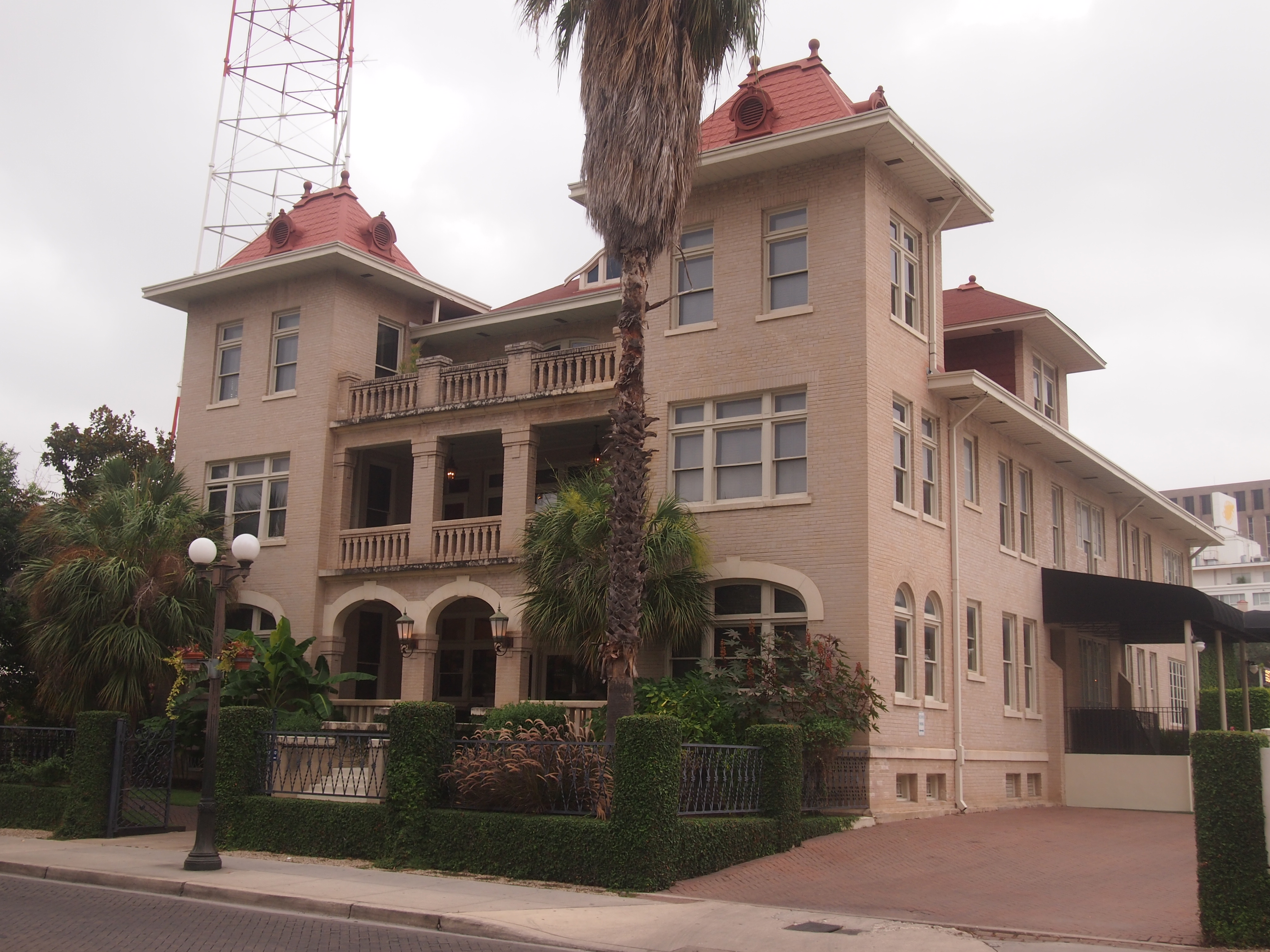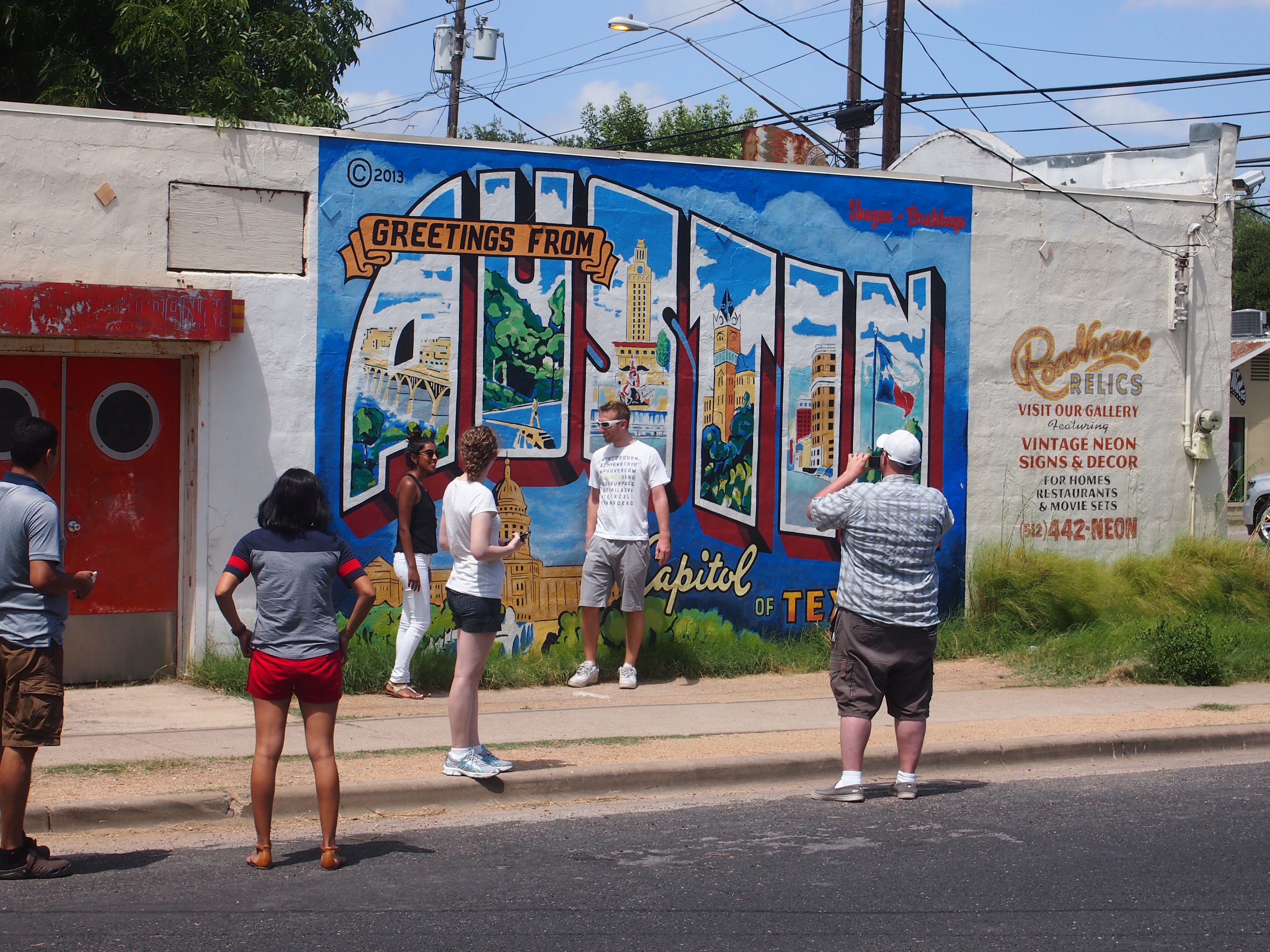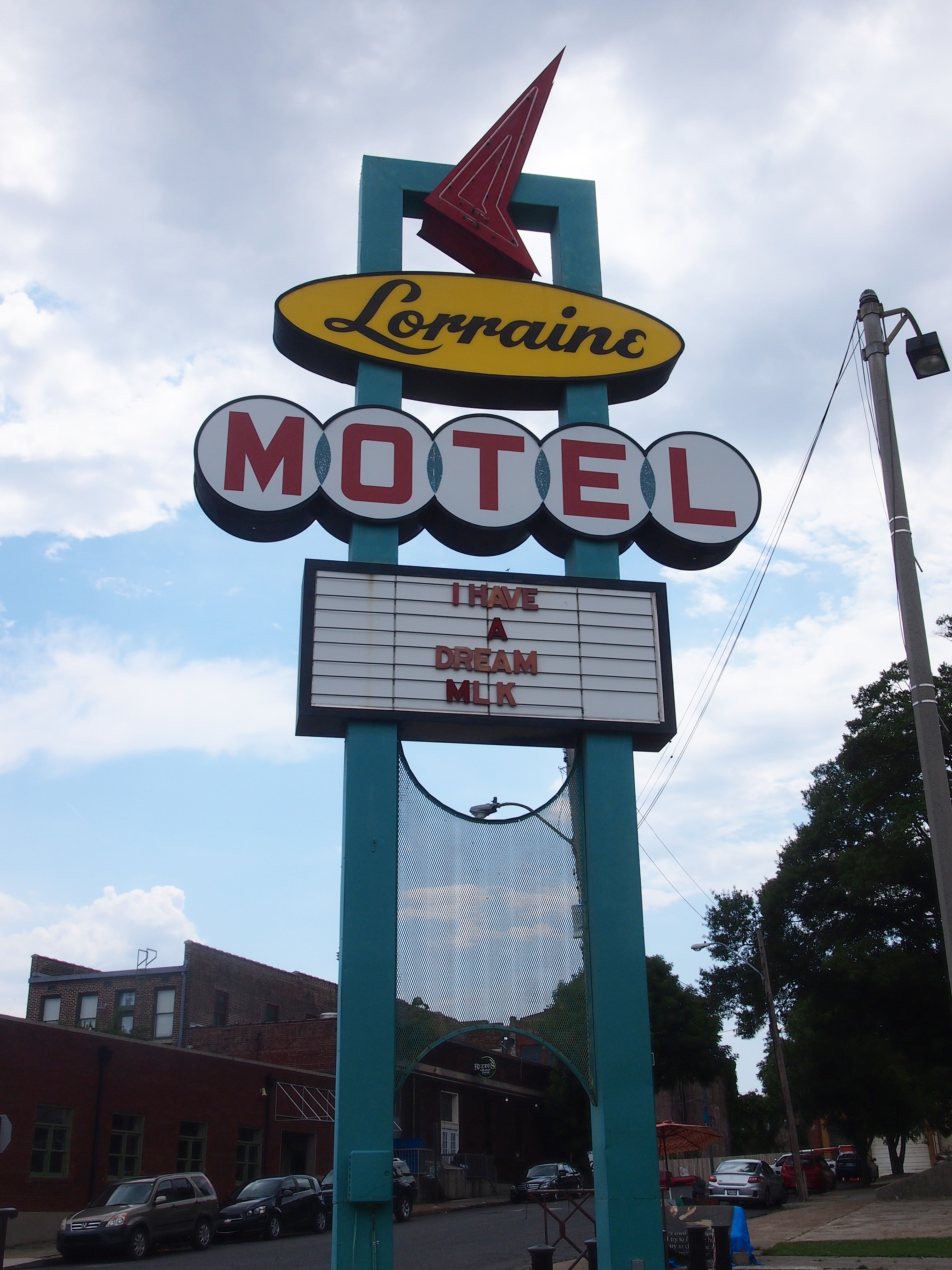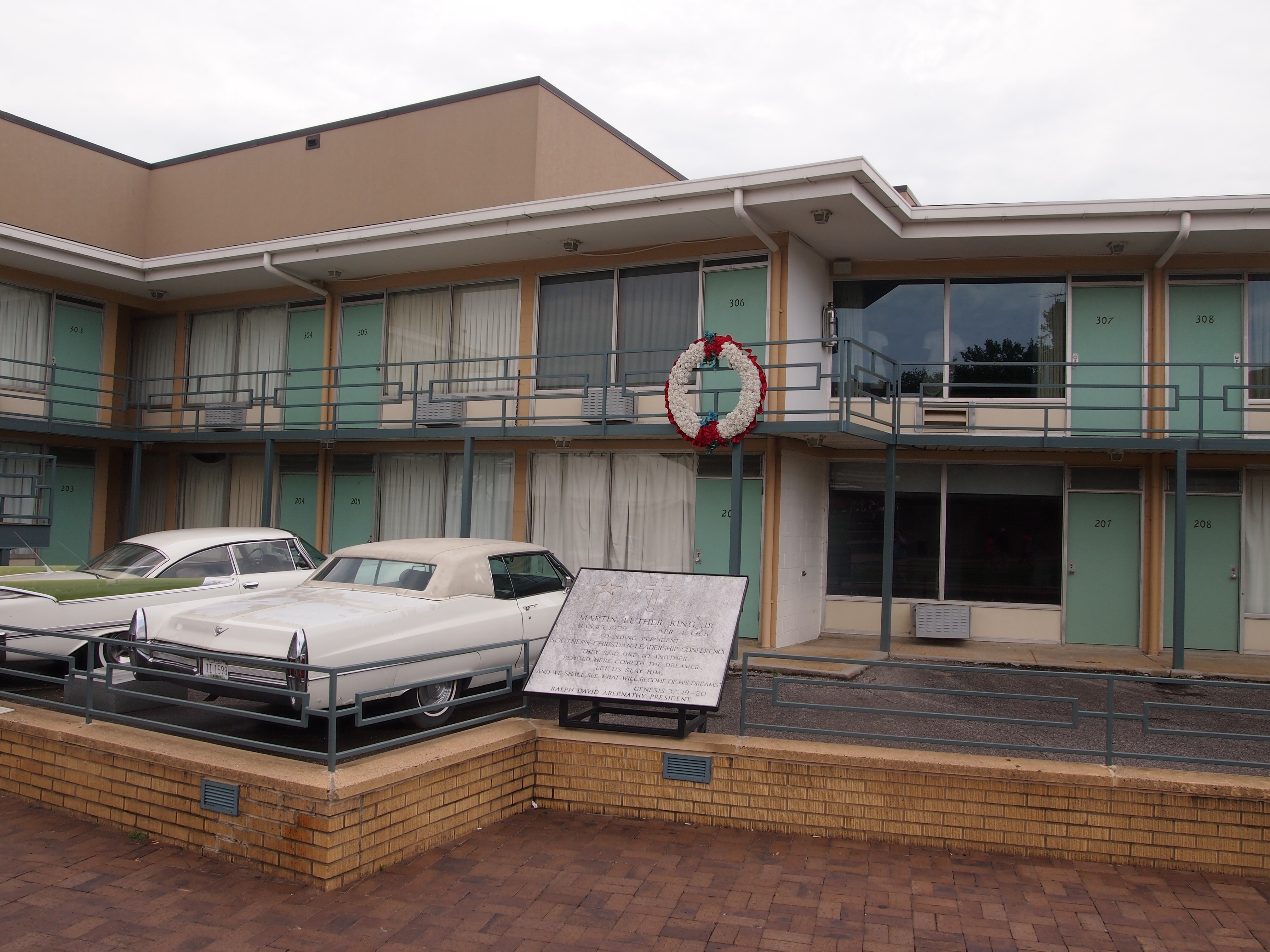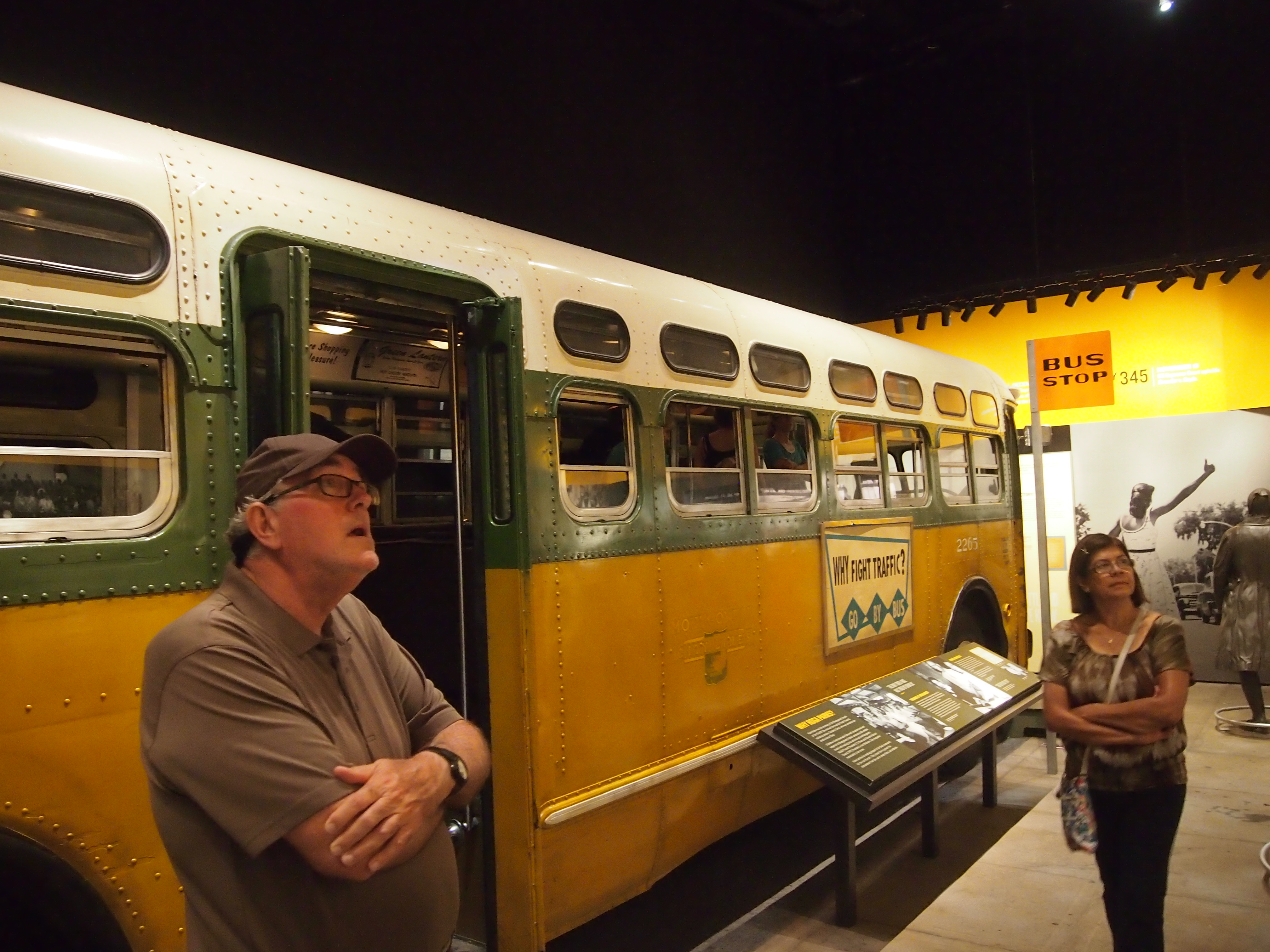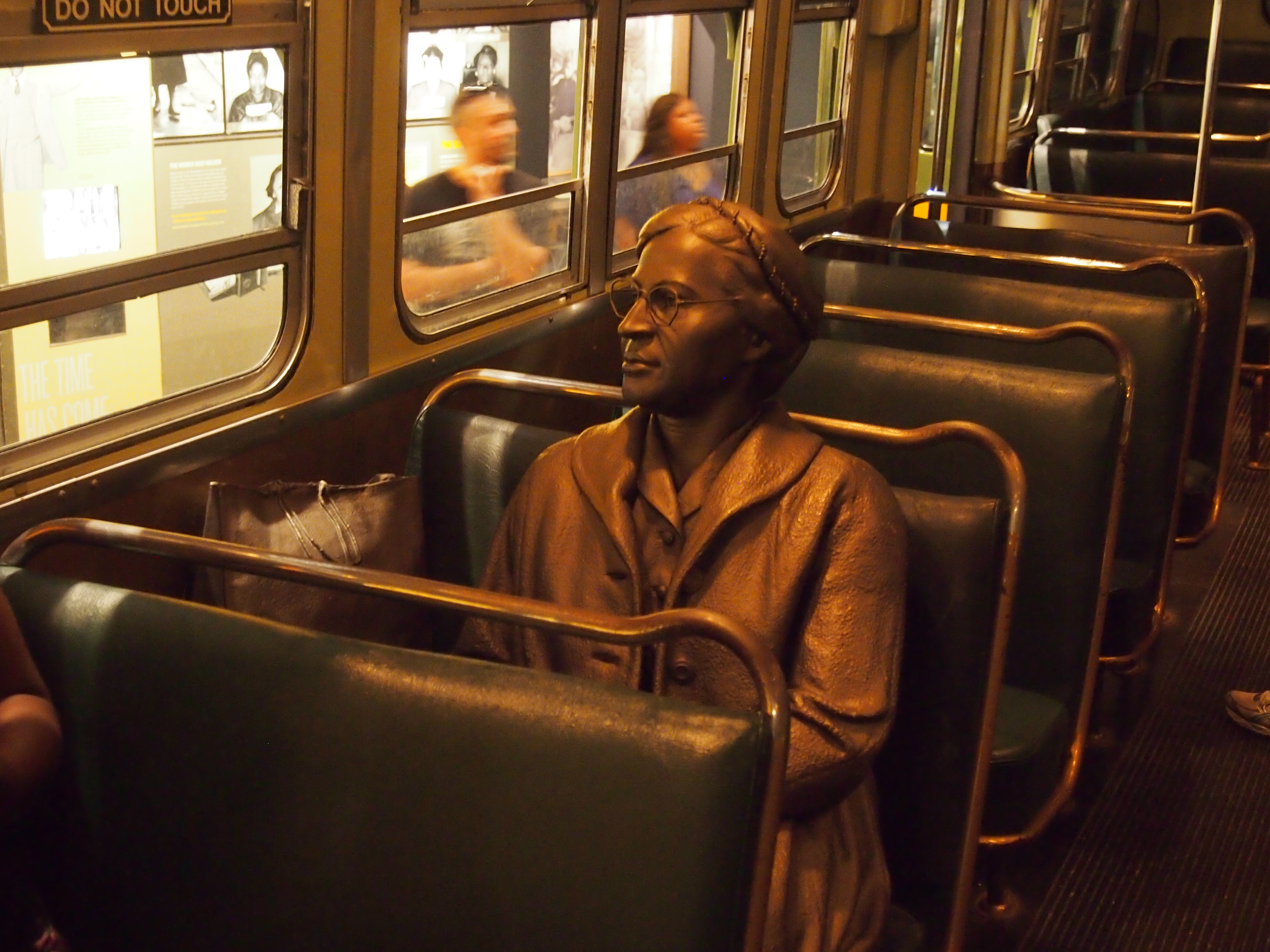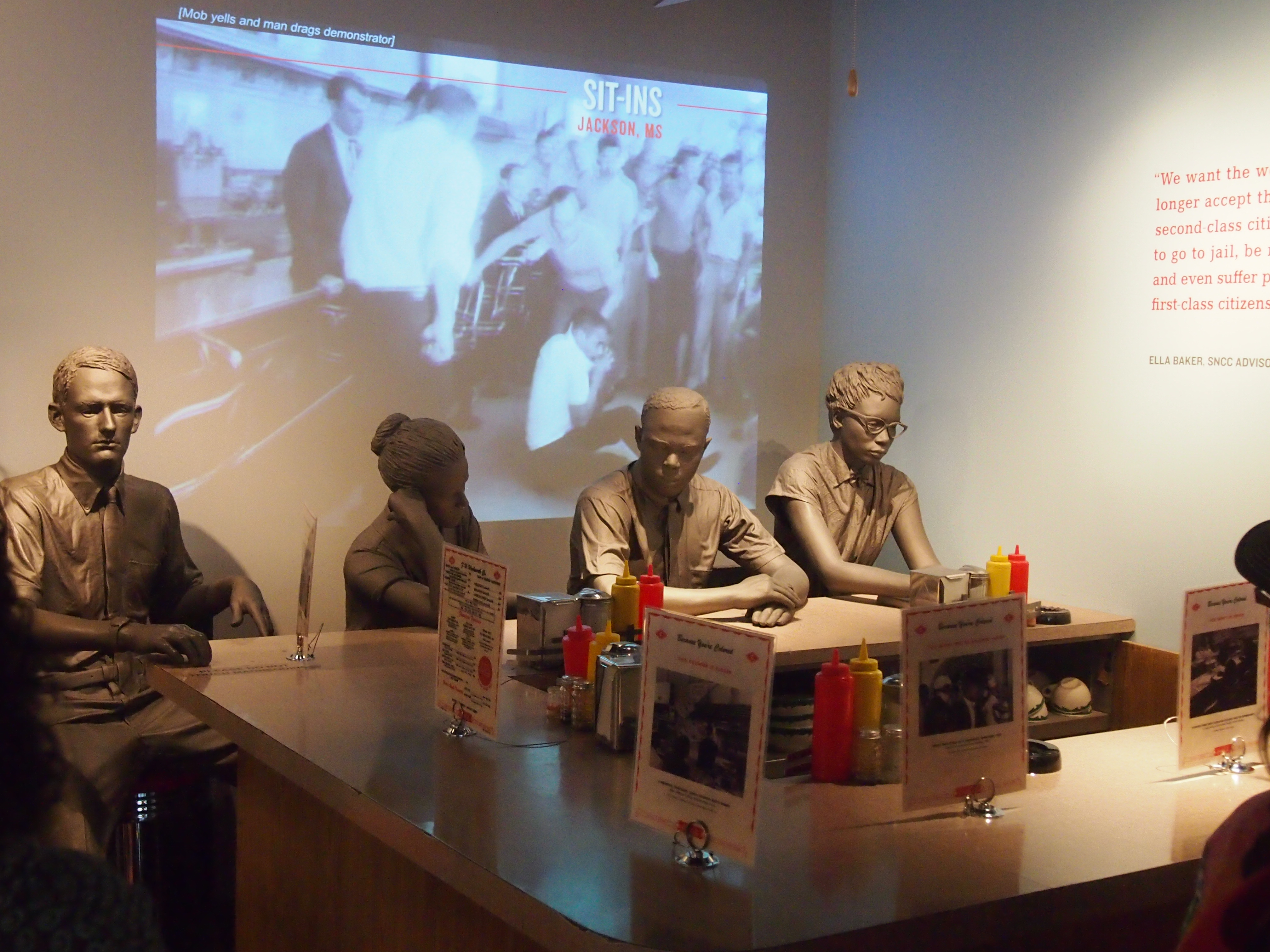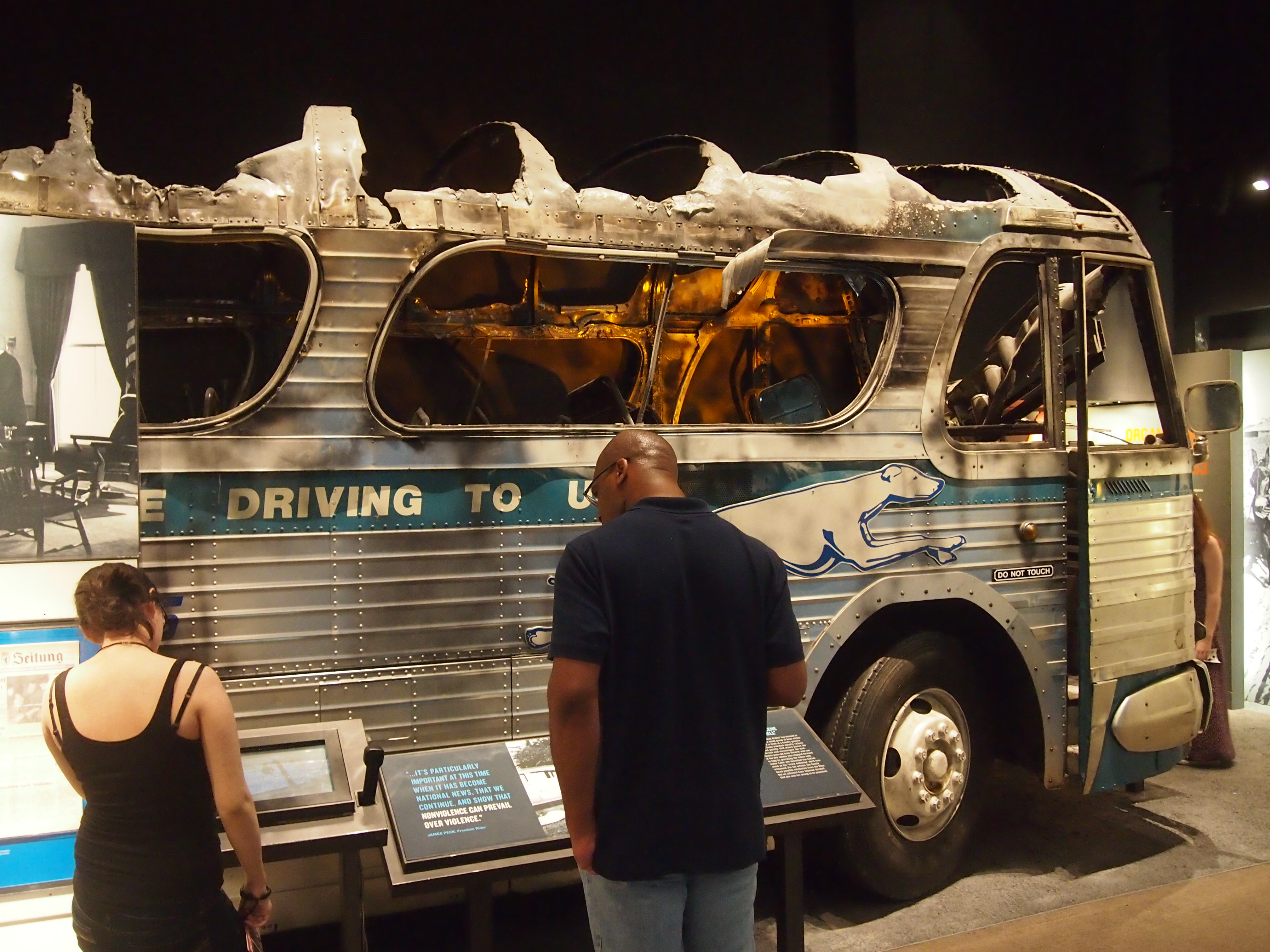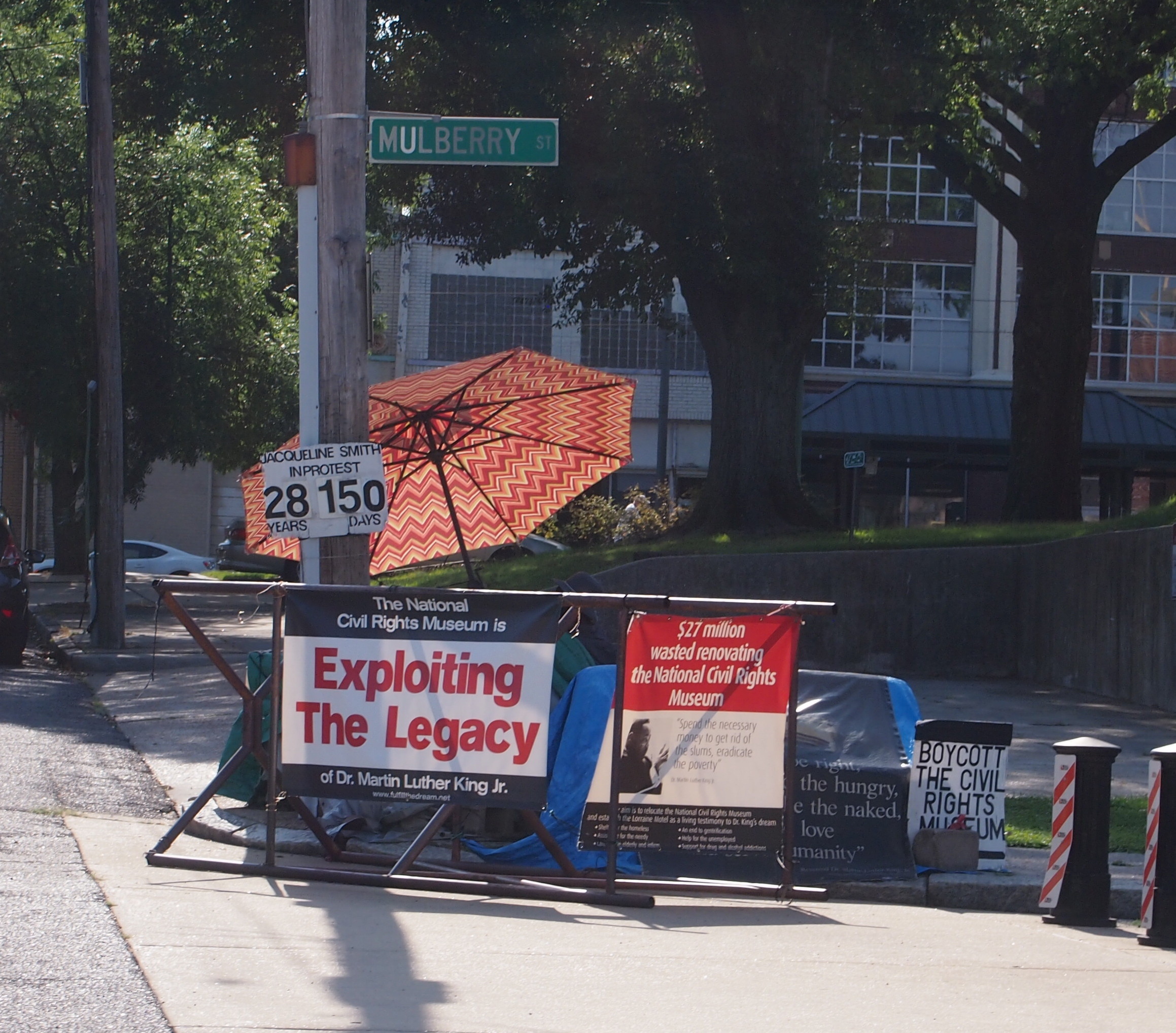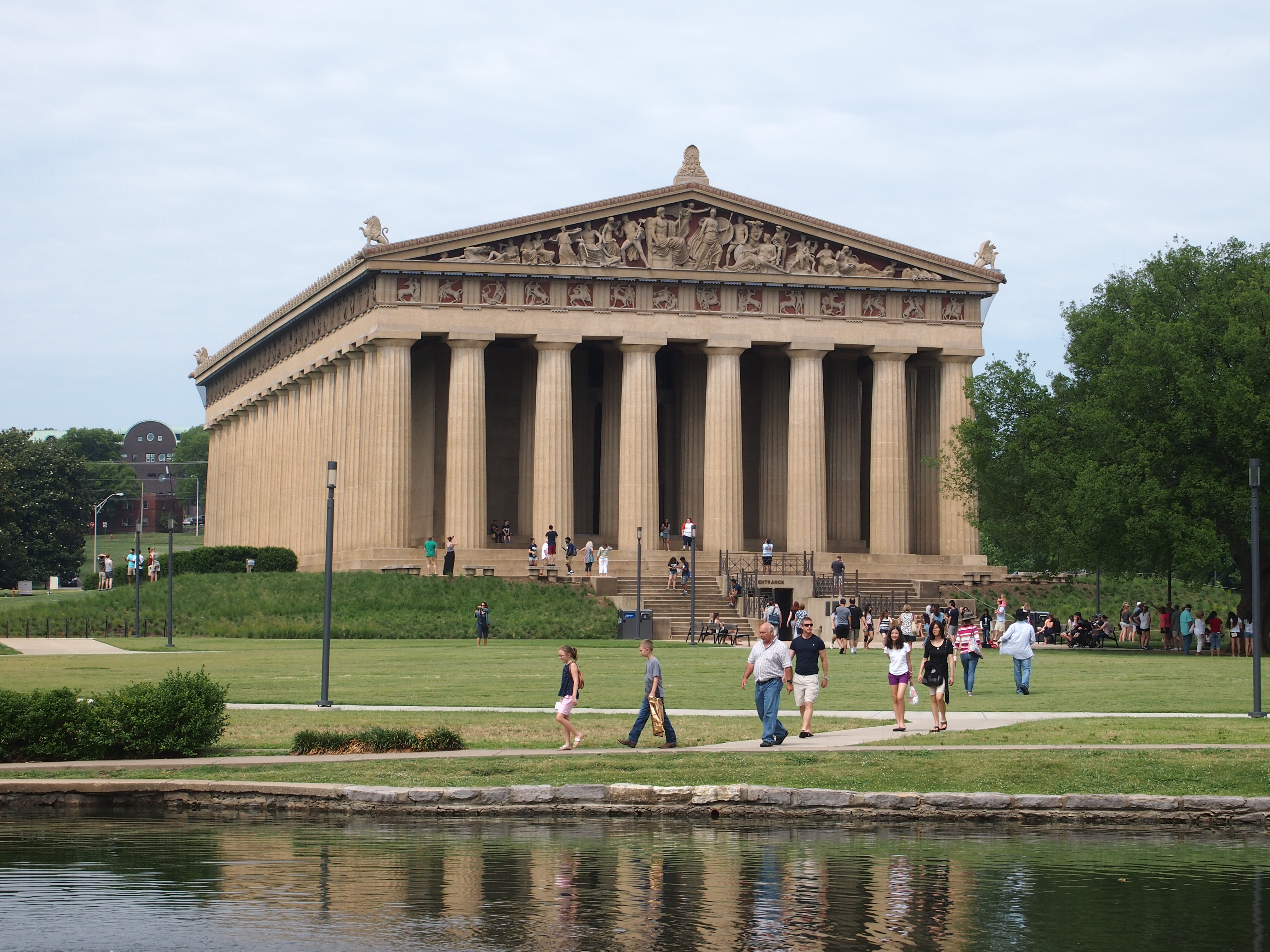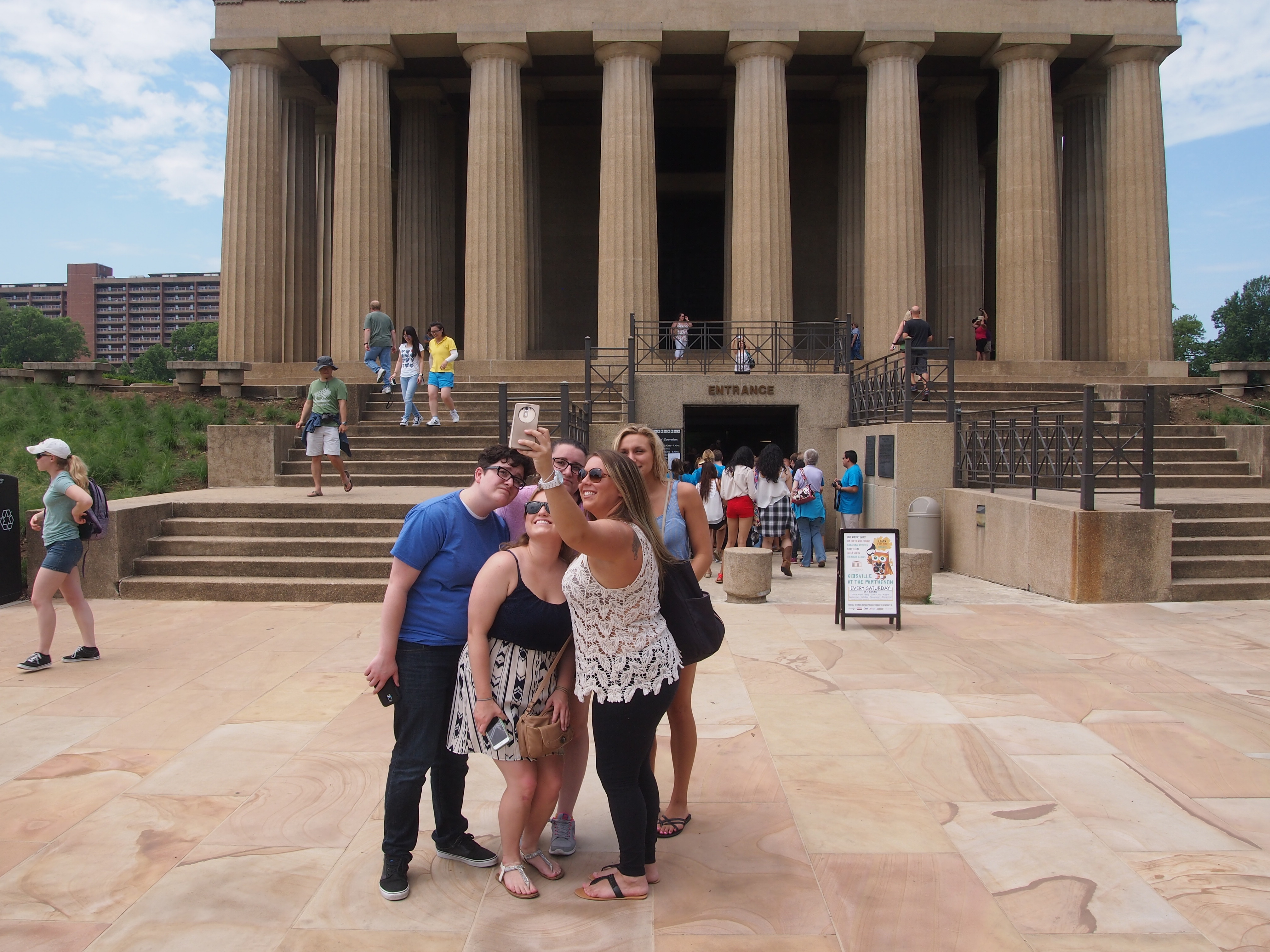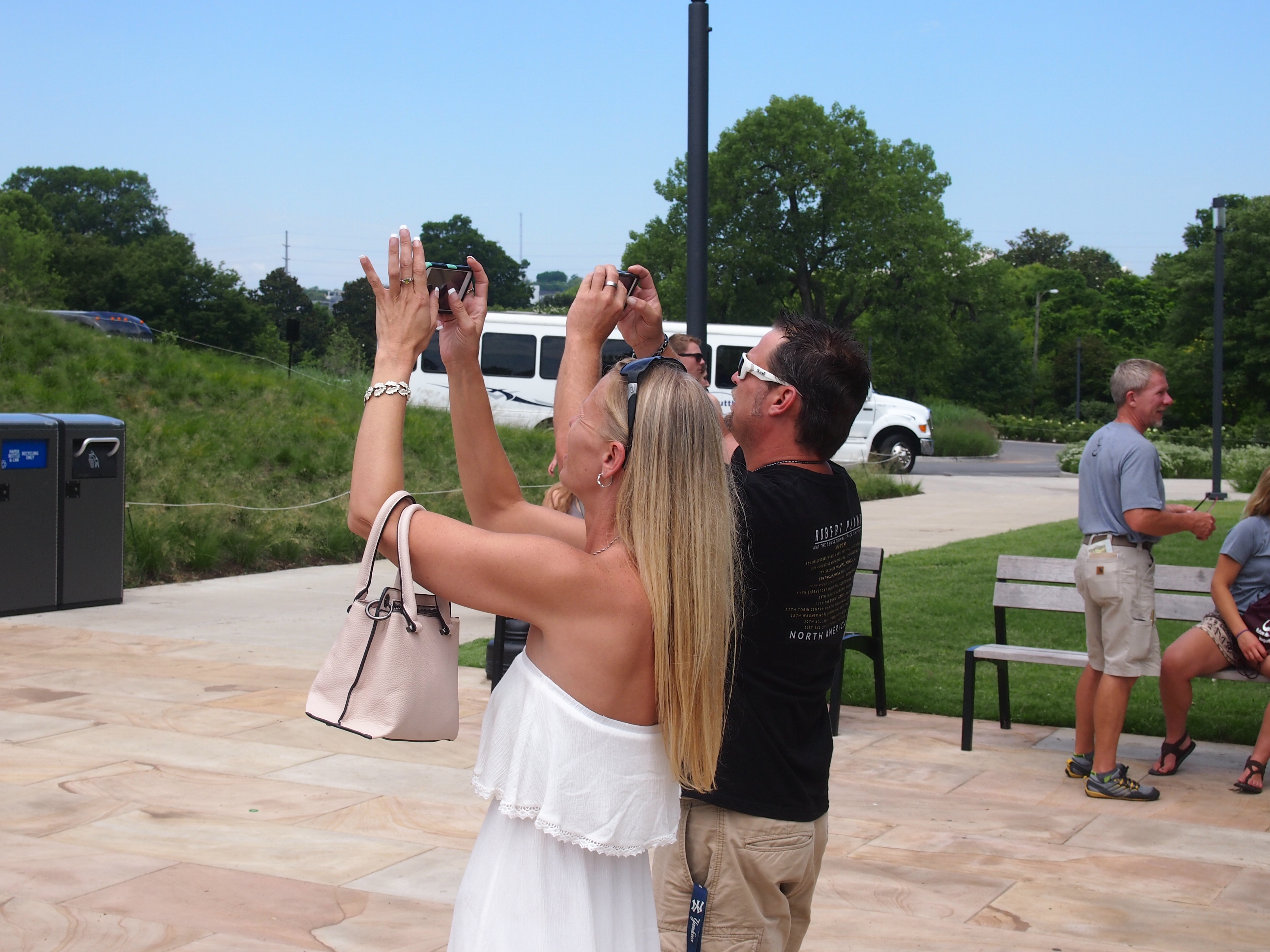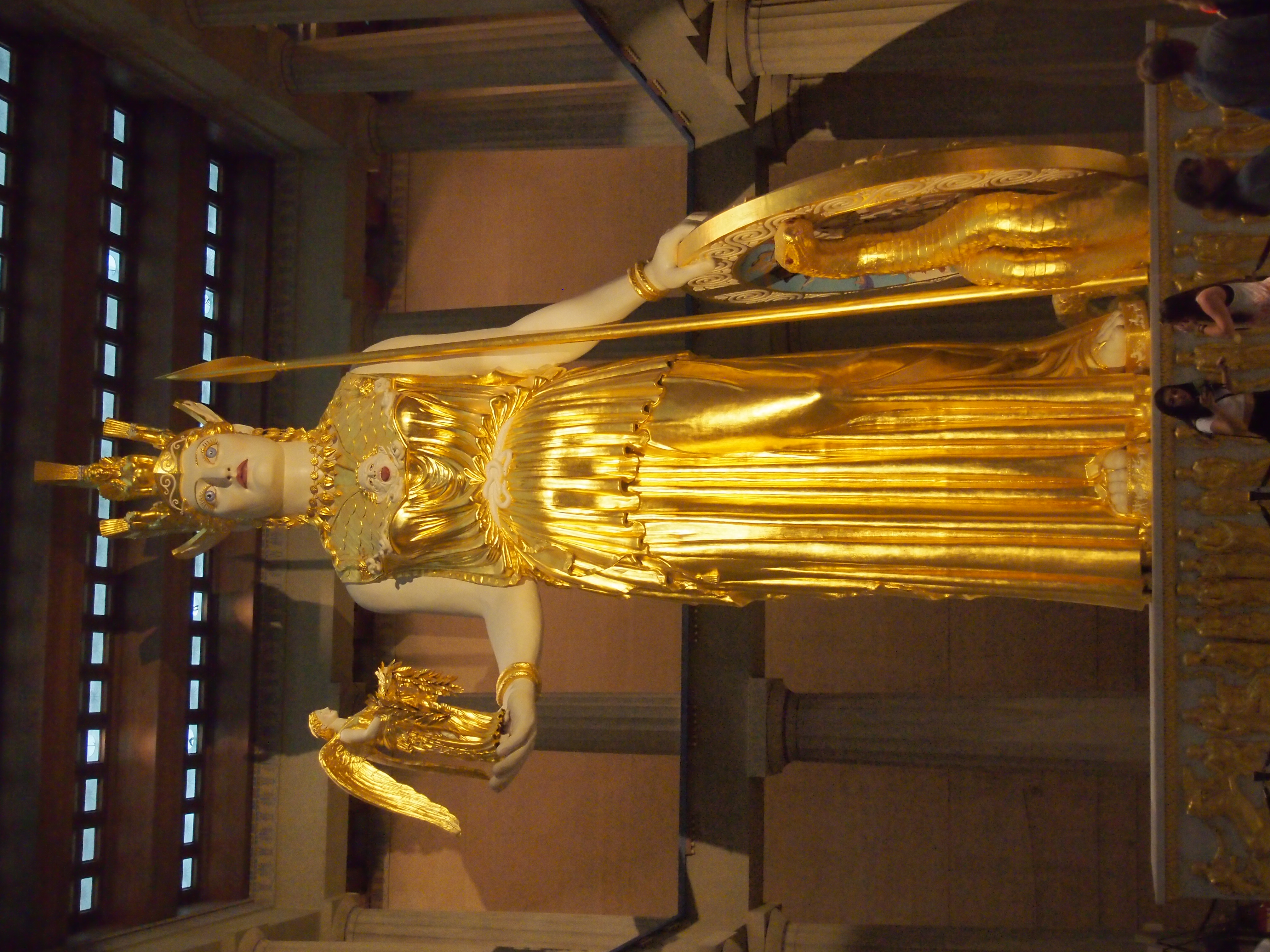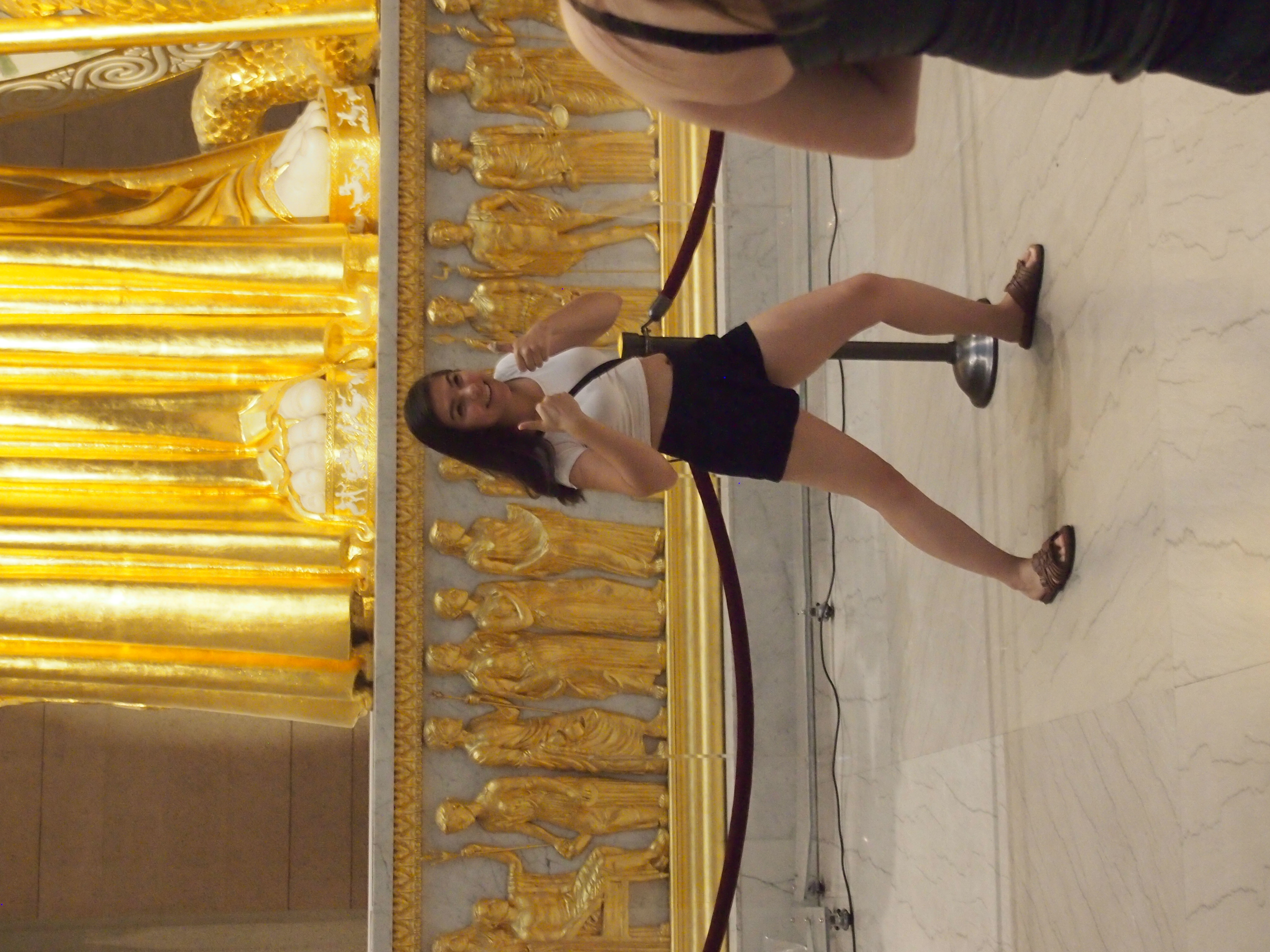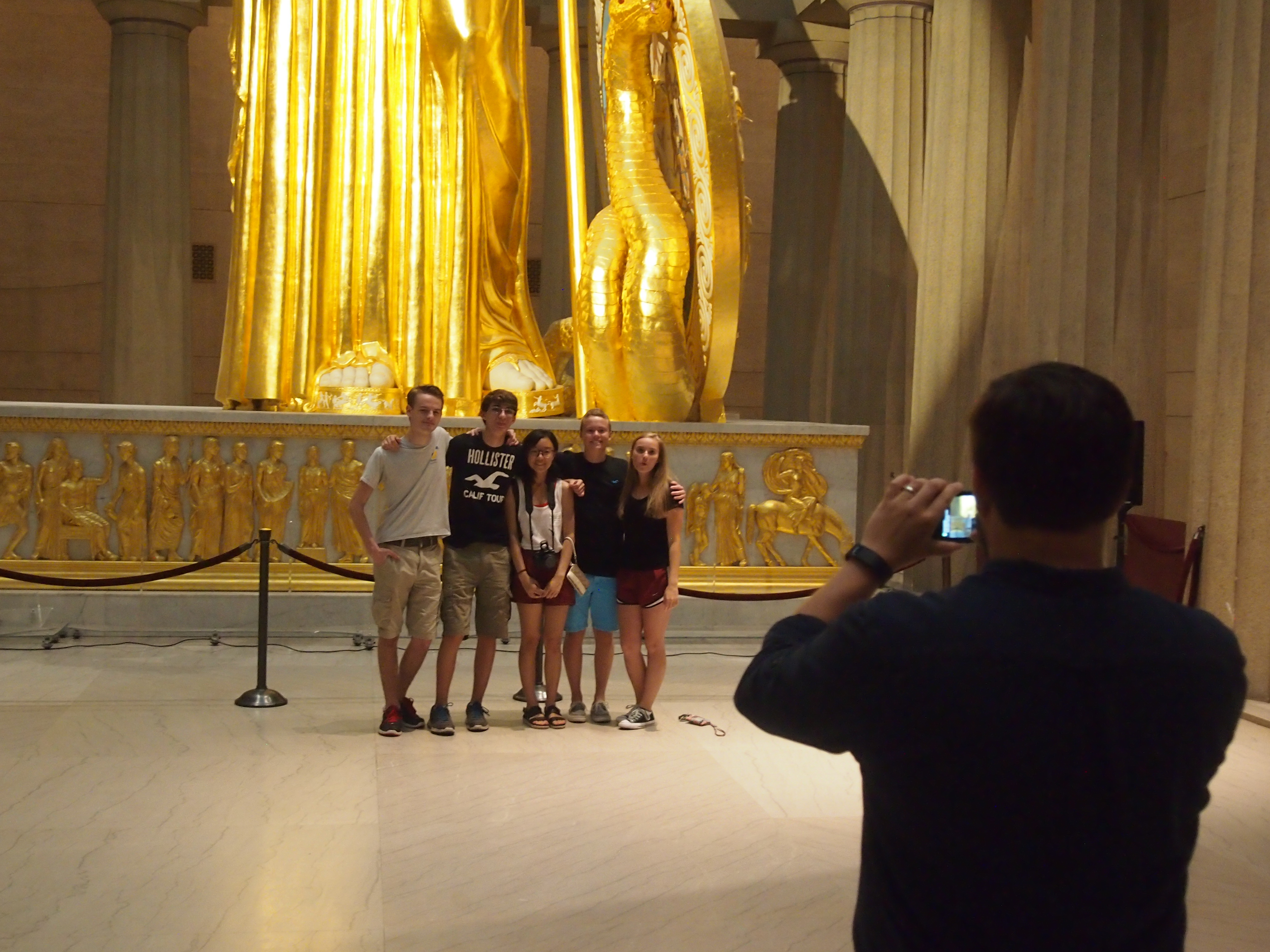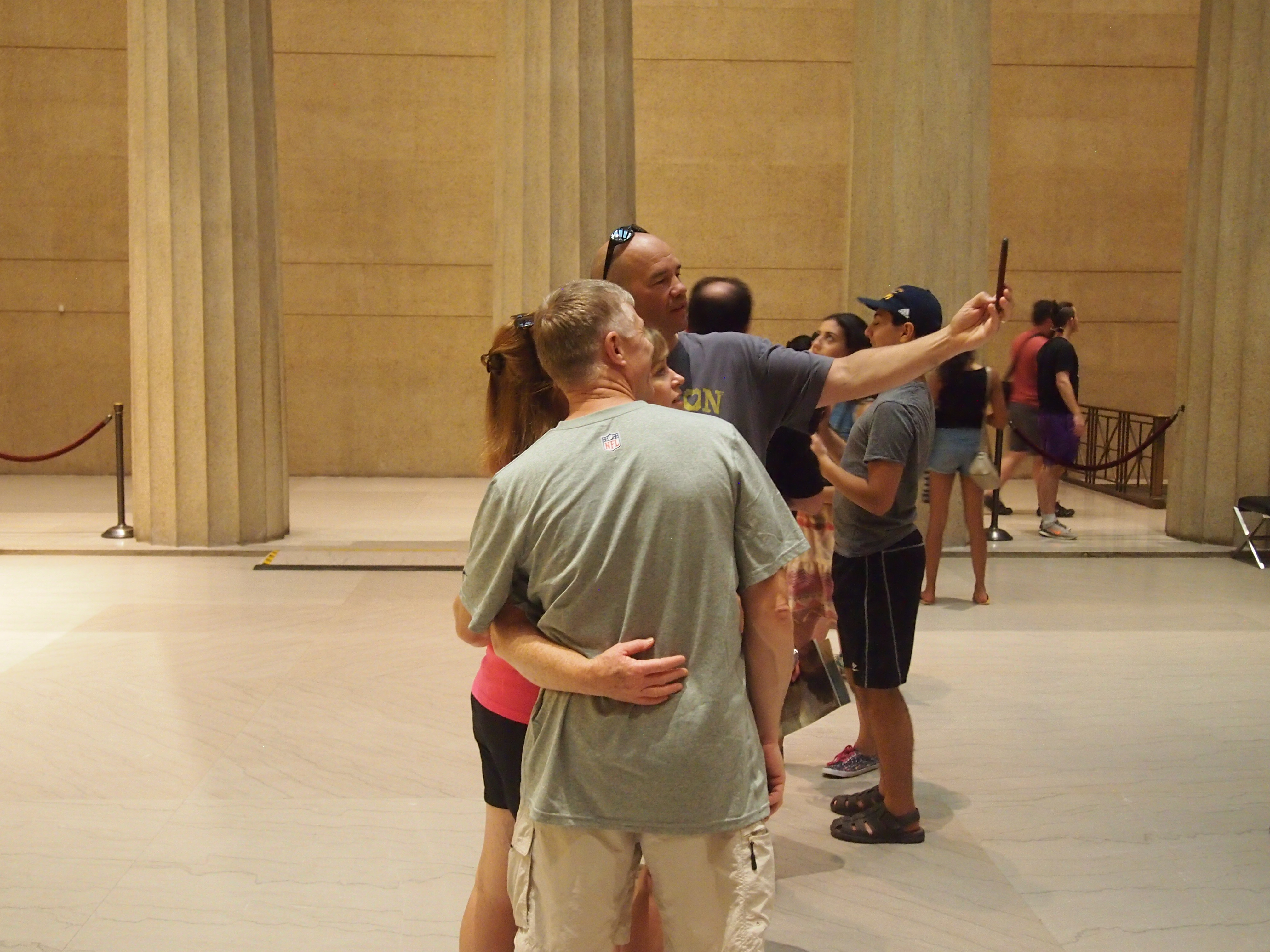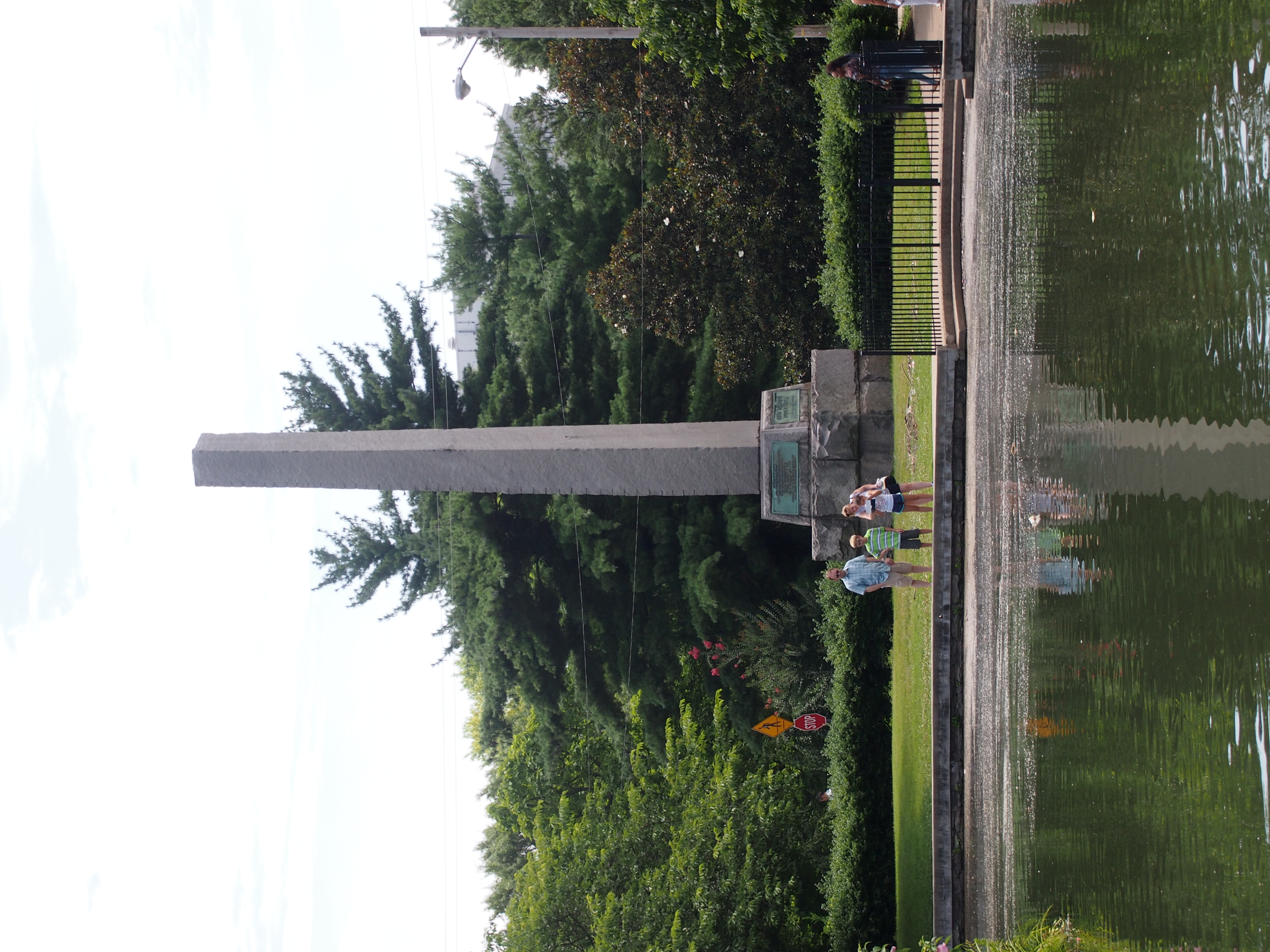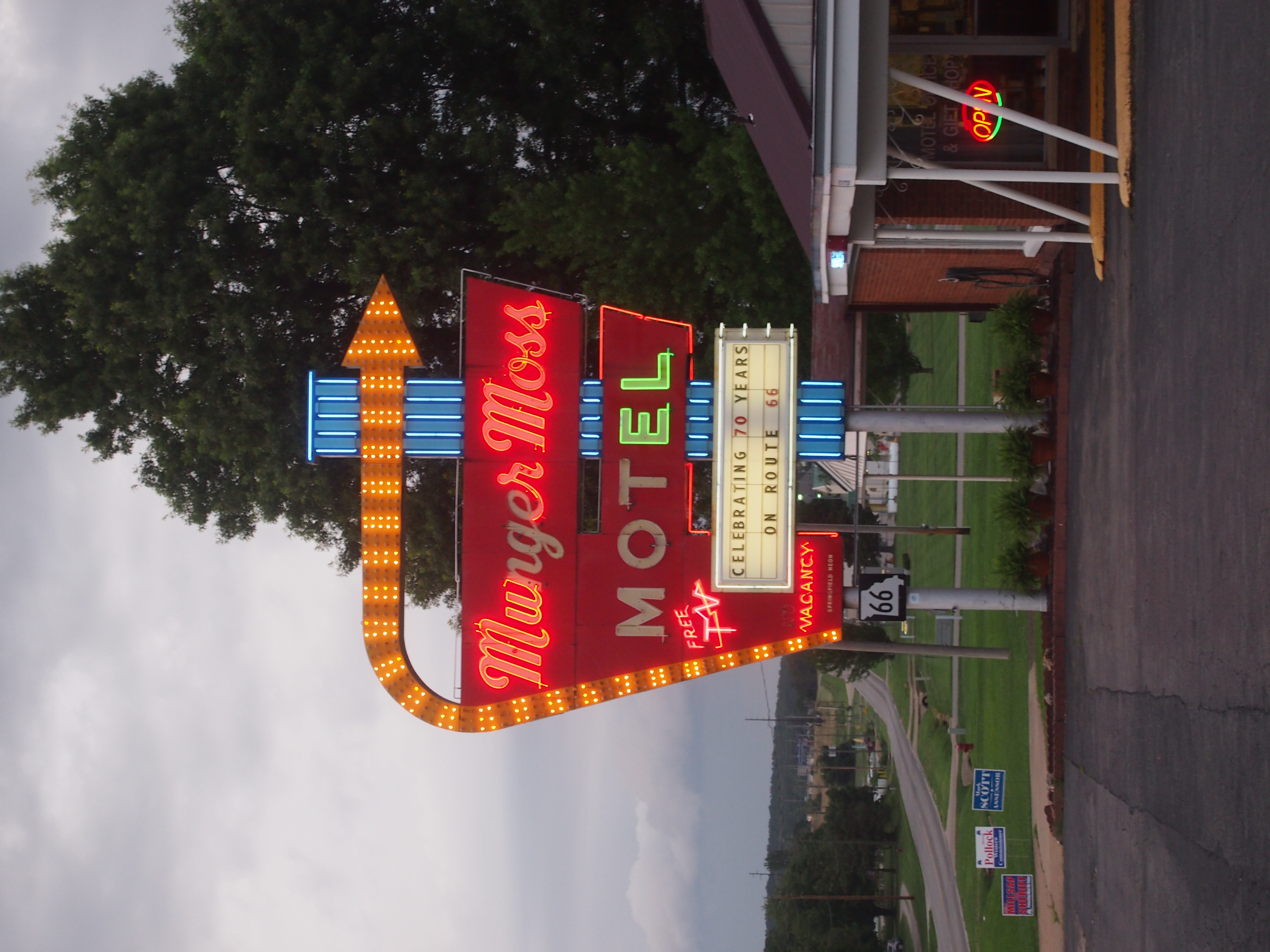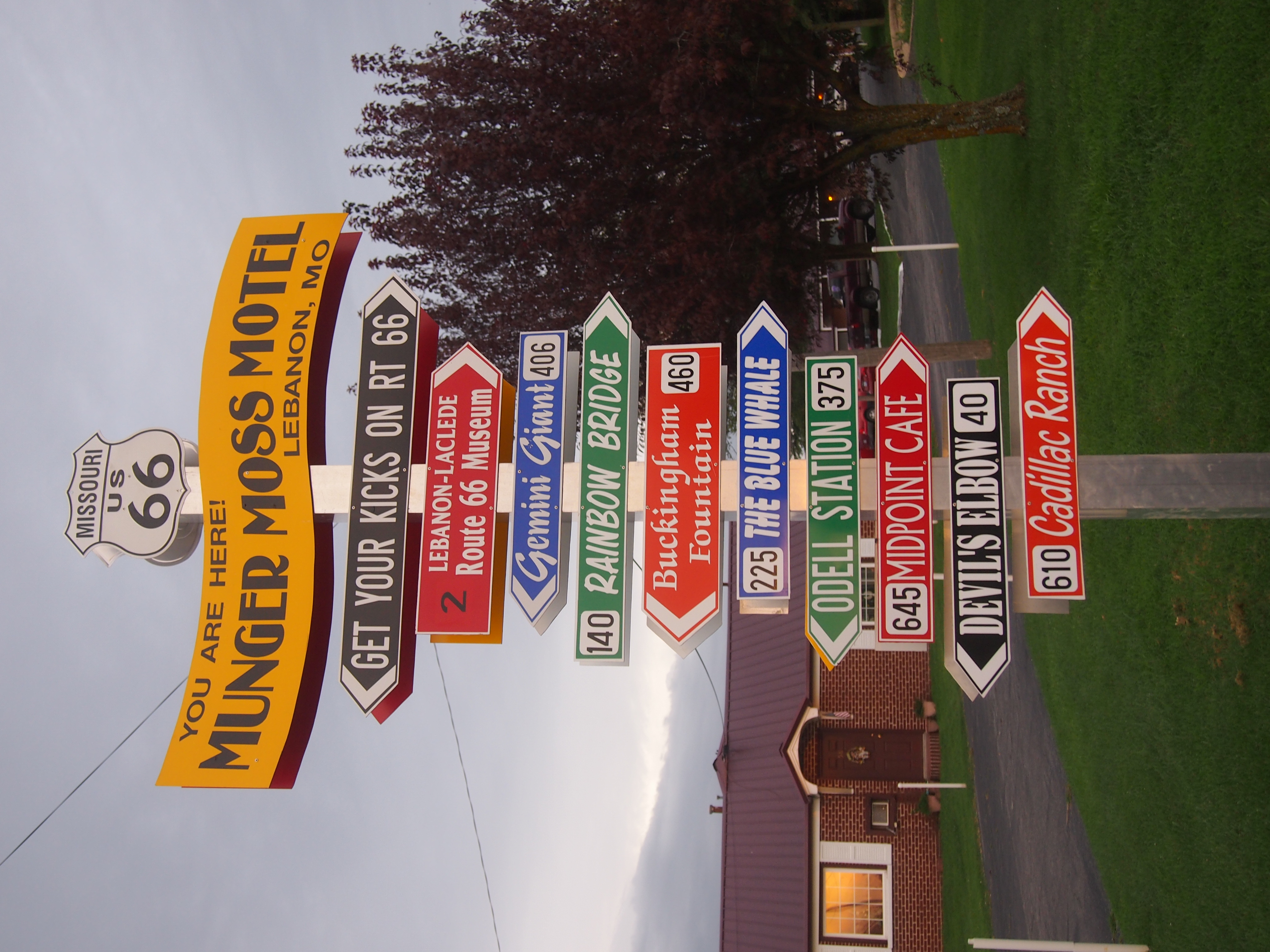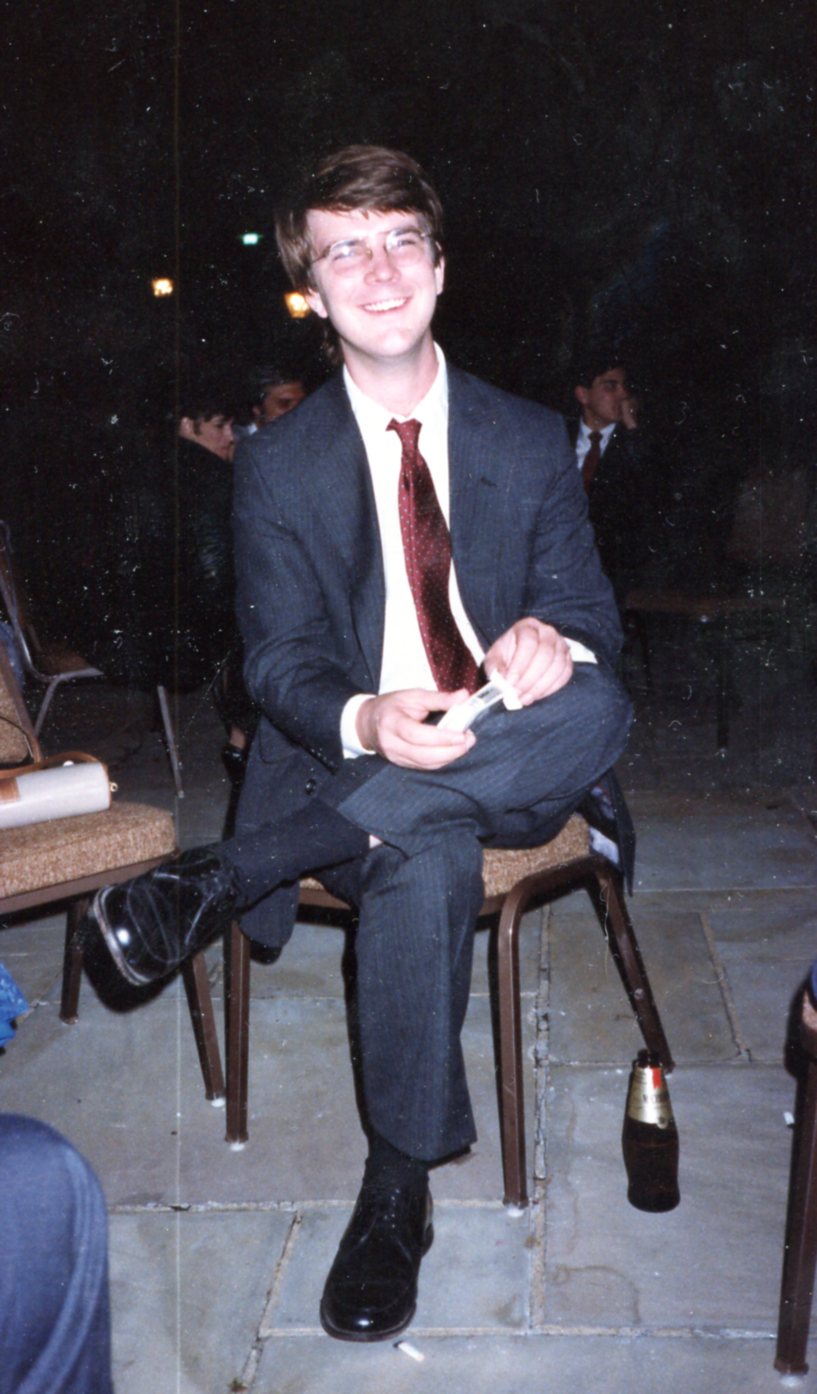Here’s a strategy for eating while on the road — longer trips especially, and one that I’ve employed on more than one occasion, including our most recent drive to Tennessee and Texas and back. Rise in the mid-morning if possible, eat breakfast at 10 or 11, then don’t eat again until at least 6.
Two meals are often enough. Less trouble, less expense. Three meals are a function of Protestant work ethic workdays, and might work reasonably well in that context, but you don’t need three squares all the time on the road.
Another variation: eat a small breakfast early, a larger lunch at 2 or 3, and then eat grocery story food in your room in the evening. Also less trouble, less expense.
In Nashville, Stephanie introduced us to Peg Leg Porker BBQ, a fairly new joint in a part of town called the Gulch, which isn’t a new part of town, but a fringe neighborhood of downtown that’s making — mostly made — the transition from industrial district to mixed-use hipster magnet. The Station Inn is in the Gluch, has been for years, and during all the times I heard bluegrass there from ca. 1981 to ’87, I don’t ever remember the area being called that.
Never mind, Peg Leg Porker, open since 2011, is everything it needs to be, with its cinderblock walls and crowded long tables and neon-signs behind the bar and the meaty barbecue smell that greets you at the door. The line to order is long — it should be — but fast-moving. I had a pulled pork sandwich with sauce and slaw, and tried some of Ann’s dry-rub wings. Pure delight. Steph said the fried pies were a delight too, but we didn’t feel like waiting in line again, this time on a stomach full of meat rather than empty, so we passed on it.
Another Nashville stop: the Elliston Place Soda Shop.
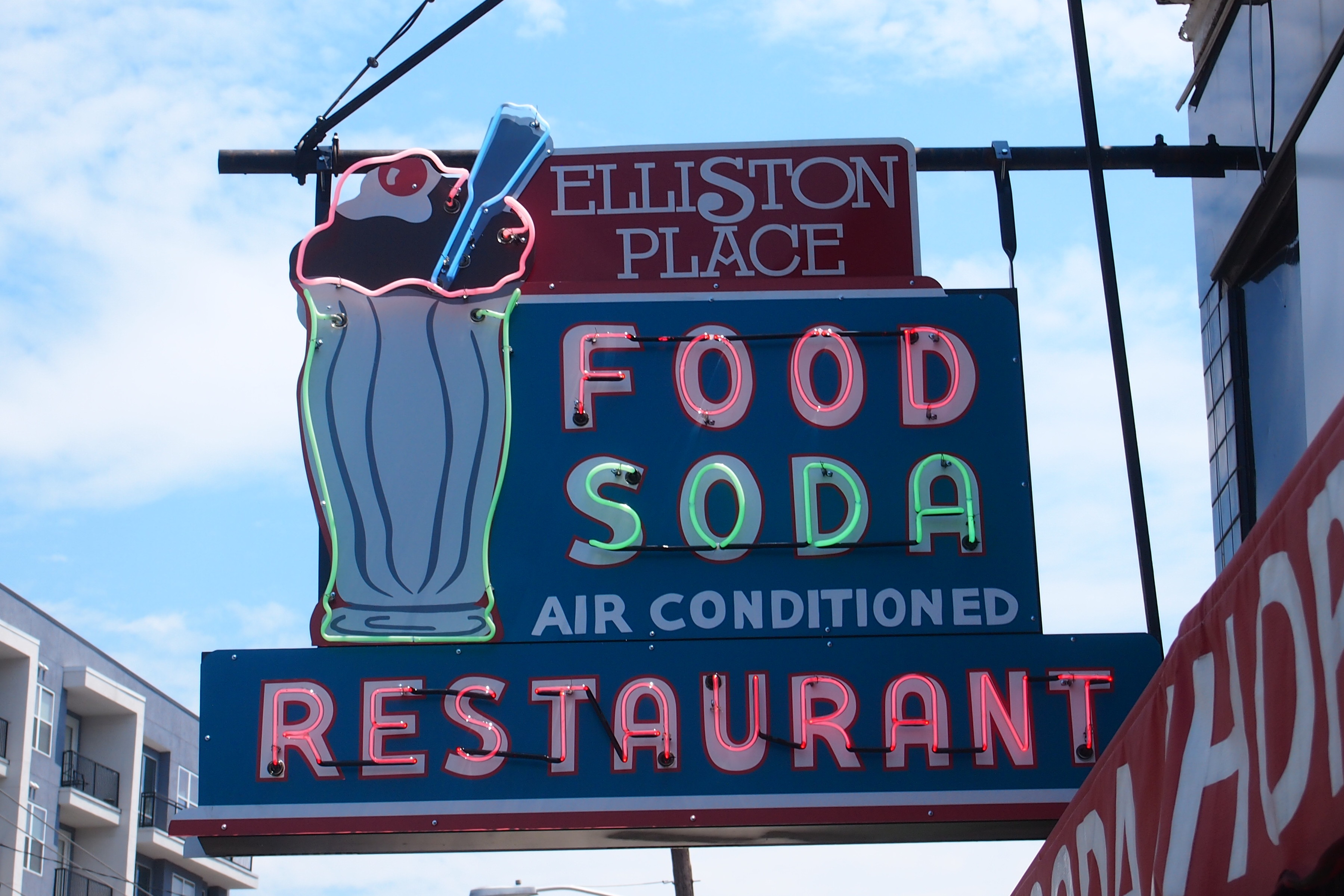 We went for the exceptional shakes, best had sitting at the counter. So we sat at the counter, the better to admire the chrome and the steel mixing machines and ads for Purity Dairy products, but not the non-working tableside jukeboxes, which are best seen from the booths. I understand Elliston Place almost joined the ranks of defunct Nashville favorites a few years ago, but did not. I’m glad it didn’t go the way of Mack’s Country Cooking, Candyland, Sylvan Park, or even the Fishery, where I used to eat oysters and drink kamikazes in the fantastic plastic summer of ’82.
We went for the exceptional shakes, best had sitting at the counter. So we sat at the counter, the better to admire the chrome and the steel mixing machines and ads for Purity Dairy products, but not the non-working tableside jukeboxes, which are best seen from the booths. I understand Elliston Place almost joined the ranks of defunct Nashville favorites a few years ago, but did not. I’m glad it didn’t go the way of Mack’s Country Cooking, Candyland, Sylvan Park, or even the Fishery, where I used to eat oysters and drink kamikazes in the fantastic plastic summer of ’82.
We got rained on in Memphis. So we ducked into the Kooky Canuck on 2nd St., because it was close, and because how could you pass up a Canadian-themed place in Memphis? Besides the name, you know it’s Canadian because the kooky mascot looks like a demented Mountie, and the place looks like a hunting lodge, complete with stuffed heads mounted on the walls. All Canada pretty much looks like a hunting lodge, after all.
Had a regular burger with blue cheese. Tasty, not too expensive. I read on the menu about the restaurant’s Kookamonga burger. It’s one of those deals in which you get it on the house if you can eat it in a certain time, in this case less than an hour. I wasn’t tempted. The Kookamonga, as the Kooky Canuck says, is “4 lbs of fresh ground-chuck, two pounds of our custom made hamburger bun, and one and a half pounds of lettuce, tomatoes, pickles, onions, and cheese…SEVEN AND A HALF POUNDS TOTAL…but the fries are optional.”
There are also two-person and four-person versions of the big burger (two- and four-man, I should say, since it’s men who tend to be meshuga in this way). As we were finishing up our meals, there was a stir a few tables away. Four young men were determined to eat the 12 lb. Humonga Kookamongaa and not pay $99.99 for it.
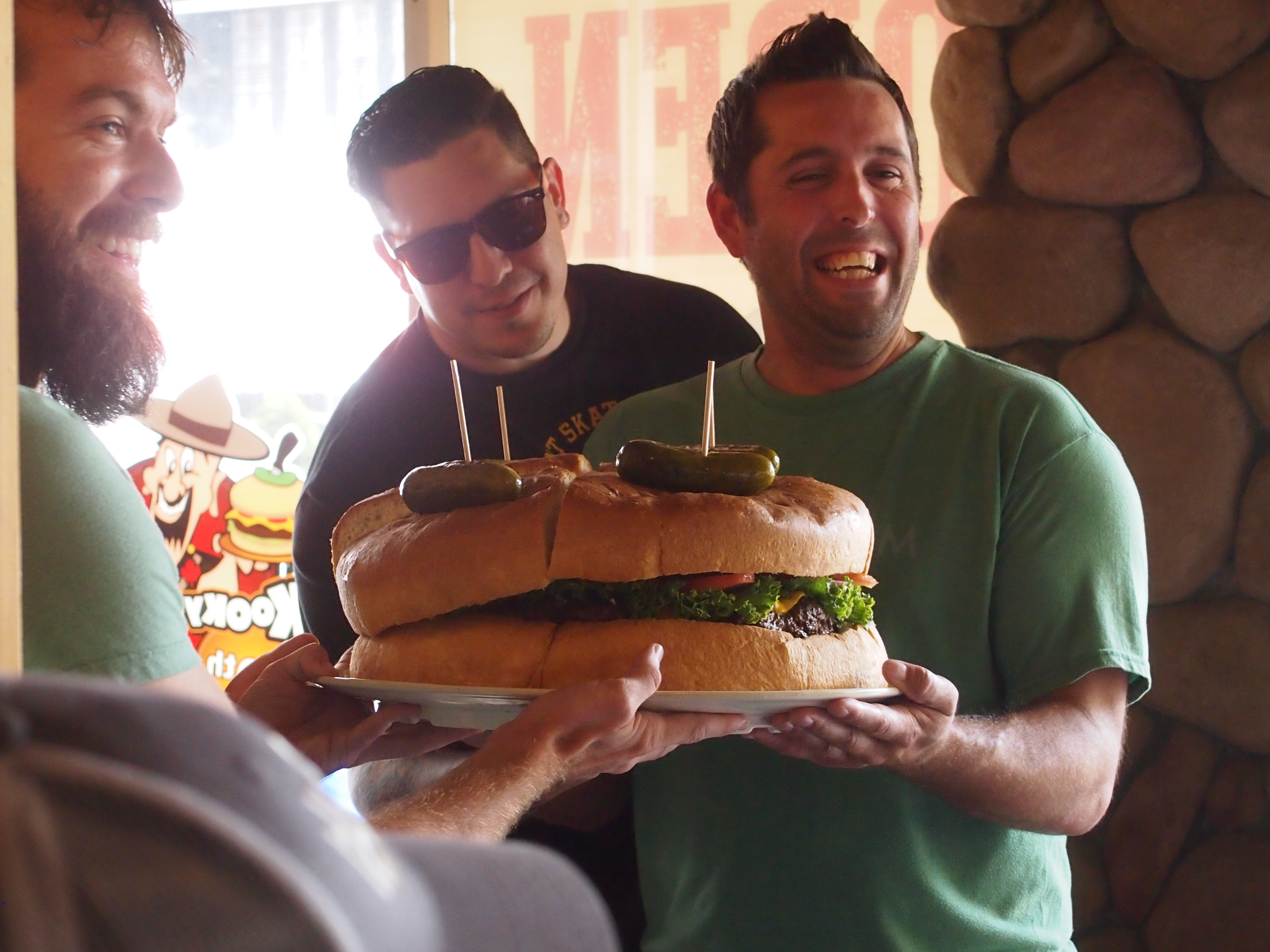 For a moment, half the restaurant was taking pictures of them. It was a case of a hamburger having its own paparazzi. I don’t know if they succeeded. The restaurant’s web site doesn’t list anyone as ever having finished the Humonga Kookamongaa, but maybe the information hasn’t been updated.
For a moment, half the restaurant was taking pictures of them. It was a case of a hamburger having its own paparazzi. I don’t know if they succeeded. The restaurant’s web site doesn’t list anyone as ever having finished the Humonga Kookamongaa, but maybe the information hasn’t been updated.
On the wall near the entrance, there are photos of people who’s eaten the one-man Kookamonga, and one fellow called Matt “Megatoad” Stonie caught our attention for doing so in 4 minutes, 45 seconds in 2013. Some time later, as we idly watched TV at the Austin Motel, we noticed that the diminutive Stonie was a competitor in the annual Nathan’s Hot Dog Eating Contest, as televised on ESPN. He came in second this year, after winning last year.
The Austin Convention Center is a failure when it comes to providing reasonably priced food to attendees. Near the facility are a number of expense-account restaurants, which have their place; and inside the center are a few high-priced snack bars, which are just damned annoying. That was it, as far as I could tell. A row of food trucks near the center would have been just the thing. There could have been a variety of them, from hip and high-priced to basic and low-priced. This is Austin, after all, an early adopter in the food truck world. But no.
Otherwise, Austin’s a good place for good eats. One morning for a 10-11 a.m. breakfast, we went to La Mexicana Bakery on 1st St. I saw its neon the night before driving by, and knew I wanted to go. We enjoyed unpretentious, good-tasting breakfast tacos and then bakery items afterward. The place also includes a number of other businesses in small rooms besides the restaurant and bakery, such as a jeweler and money-wiring service. Pay attention, Millennials. Looking for an authentic Mexican joint? This is one.
Shady Grove on Barton Springs Road, recommended by Tom, is an enormous place, indoors and even outdoors (aptly under groves of trees), that has a fine basic menu of sandwiches and Tex-Mex and plate specials. I had the Truckstop Meatloaf, an excellent meal that inspired a nonsensical discussion at our table about seeking out the best truck stop meatloaf in each of the states, later modified to only the lower 48.
Another winning inexpensive restaurant in Austin is the Magnolia Cafe on South Congress, a few blocks south of the Austin Motel, a small place that promises to be open 24 hours a day, 8 days a week. Even on a weekday during lunchtime — the day after July 4, a Tuesday — the joint was packed. For me, pancakes were the thing. It was a good choice.
Pancakes were also a good choice at the Blue Bonnet Cafe in Marble Falls, Texas, as we headed north some days later. The place is apparently known for its pies, and we saw waitresses bringing out many slices of pies as we had breakfasts as lunch that day. But pie doesn’t follow a large breakfast very well, so we didn’t order any (surprising our waitress a little, I think). One of these days, I might return to Marble Falls, which isn’t far from Austin and clearly does well by Austinites in town for the day, and try the pie. But that day (July 8) we had other pie-oriented plans.
Namely, to stop in Hico, Texas, which is much closer to Dallas than Austin, and eat pie at the Koffee Kup. Why there? Word is that’s what my pie-loving uncle Ken and aunt Sue did when passing through Hico over the decades. So we ate pie in their honor. The black forest pie was exquisite, though at $5 a slice, a bit overpriced. I seem to remember paying about that much for pie in a Manhattan diner a few years ago, and Hico shouldn’t have Manhattan prices. Ah, well.
One more: Etown Donuts, Elizabethtown, Ky. I got there the first morning of the trip, just before they ran out of doughnuts. Glad I did.
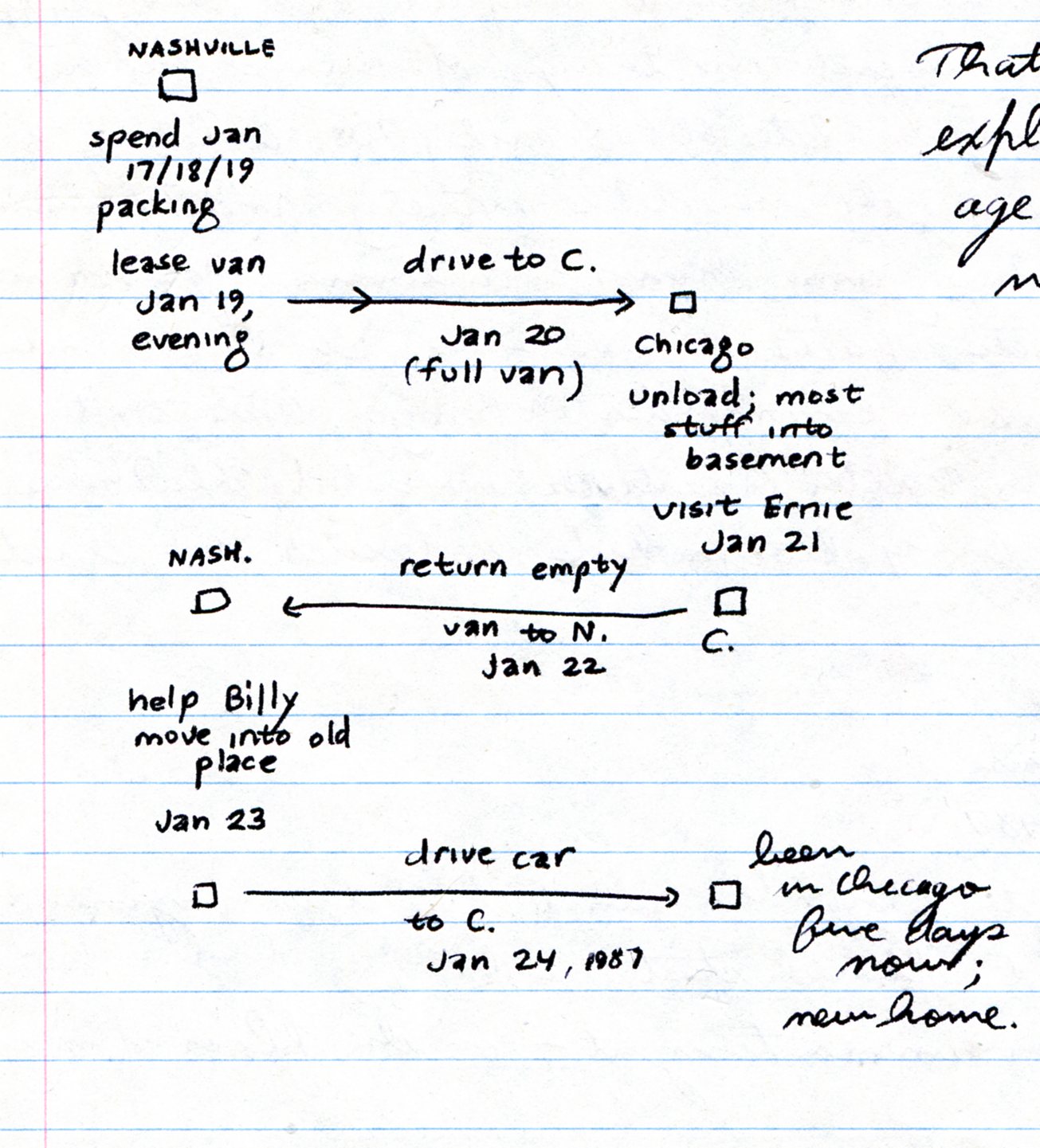 The move was fairly straightforward. Load up a rental truck in Nashville, unload at my new apartment in Andersonville in Chicago, take the truck back to Nashville, drive my car and whatever I hadn’t loaded back to Chicago. About 500 miles each way. I guess it was tiresome, but I was young.
The move was fairly straightforward. Load up a rental truck in Nashville, unload at my new apartment in Andersonville in Chicago, take the truck back to Nashville, drive my car and whatever I hadn’t loaded back to Chicago. About 500 miles each way. I guess it was tiresome, but I was young.